Be not afraid of greatness. Some are born great, some achieve greatness, and others have greatness thrust upon them.
― William Shakespeare, Twelfth Night
Most of them are afraid of losing their identity and some others, which is the destiny
― William Shakespeare, Twelfth Night
Most of them are afraid of losing their identity and some others, which is the destiny
Death leaves a heartache no one can heal
Love leaves a memory no one can steal
17
Ritchie Valens (1941-1959)
Plane crash. After a winning cointoss and despite of his fear to fly, together with Buddy Holly and The Big Bopper, he flew out of the Mason City airport in a small plane that Holly had chartered. The plane flew into a blinding snowstorm and crashed shortly after takeoff. This is known as "The Day The Music Died".
Road accident in a taxi in United Kingdom. The taxi crashed into a lamp post. Cochran was thrown through the windscreen, and was taken to the hospital, where he died the following day of severe head injuries.
Suicide. After he was arrested and charged with the murder of his girlfriend Nancy Spungen, he had a small gathering to celebrate his detoxed from heroin a few months later. His mother delivered some heroin again. He overdosed himself too much of the nearly 100%-pure heroin to shoot up the third dose himself.
Stuart Sutcliffe (1940-1962)
Stuart Sutcliffe (1940-1962)
Aneurysm, after bleeding in the right ventricle of his brain. Also known as the fifth Beatle, he began experiencing severe headaches and acute sensitivity to light and stated that some of the headaches left him temporarily blind. Doctors told that there was absolutely nothing wrong with him. After collapsing again he was taken to hospital, but he died before the ambulance reached the hospital.
22
Darby Crash (The Germs) (1958-1980)
Suicide by drug overdose. He committed suicide for reasons unreported at the time. It was part of a suicide pact made with Casey Cola in which she survived and he did not. He overdosed on heroin under a sign taped to the wall, reading, ‘Here Lies Darby Crash.’ His death was largely overshadowed by John Lennon’s murder the next day.
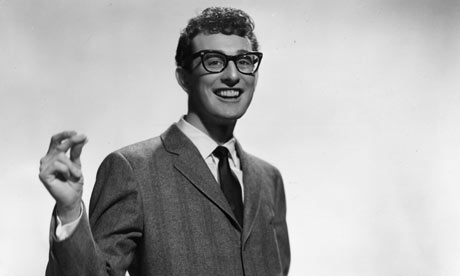
Buddy Holly (1936-1959)
Plane crash. Together with Ritchie Valens and The Big Bopper, he flew out of the Mason City airport in a small plane which flew into a blinding snowstorm and crashed shortly after takeoff. This is known as "The Day The Music Died".
Aaliyah (1979-2001)
Aaliyah (1979-2001)
Plane crash. After filming a music-video on The Bahamas. Against the advice of baggage handlers and the pilot, all the equipment from the shoot was loaded on to the plane. The group was unaware that the plane was unable to hold all the equipment. The plane crashed shortly after takeoff.
Suicide. Jumped from a telecommunications mast in the backstage artists' parking area of Pukkelpop. Haddon was reported to have been distressed after he feared he had seriously injured a young girl earlier after a stagedive.
Heart attack after consuming a speedball. He was to perform with his close friend Fleafrom the Red Hot Chili Peppers onstage at the Viper Room, a Hollywood night club partly owned at the time by actor Johnny Depp. Despite of his squeaky-clean image, at some point in the evening he went to the bathroom to take drugs with various friends and dealers. He collapsed outside the club from a drug overdose of heroin and cocaine (known as a speedball) further amplified by the administration of diazepam.

Ian Curtis (Joy Division) (1956-1980)
Suicide. Hanging. After a depression maybe caused by heavily epileptic seizures, just one day before going on a American tour, he hanged himself in the kitchen of his house.
Bobby Fuller (1942-1966)
Murdered. Found dead in his automobile, which was parked outside his Hollywood apartment, with multiple wounds all over his body and covered in gasoline, leading many to speculate that the perpetrators fled before they could set the car on fire. Some suspect that Charles Manson may have had something to do with it. There is also some speculation that the LAPD may have been involved because of his connection to a mafia related woman.
Mel Appleby (Mel & Kim) (1967-1990)
Pneumonia following treatment for metastatic paraganglioma. She was first diagnosed with cancer, prior to the success of Mel & Kim, when she had an operation to remove a large tumour on her liver. The cancer returned to her spine. During her lengthy health problems towards the end of her life, her condition was for some time rumoured to be a spinal disc herniation resulting from the energetic dance routines performed by the pair.
Murdered by the president of her fan club. After she told Yolanda Saldívar that she could not be trusted anymore with money and fired her, Saldívar drew a gun from her purse, pointing it at Selena. As the singer turned and left the room, Saldívar shot her once in her right shoulder, severing an artery. Critically wounded, Selena ran towards the lobby to get help. She collapsed on the floor as the clerk called 911, with Saldívar chasing her, calling her a "bitch". Before collapsing to the floor, Selena named Saldívar as her assailant.
24
Cliff Burton (Metallica) (1962-1986)
Road accident. The tourbus ran over black ice, skidded off of the road and flipped onto the grass in rural southern Sweden. Burton was thrown through the window of the bus, which fell on top of him, crushing him to his death. James Hetfield later stated that he believed the bus flipped because the driver was drunk, claiming his breath smelled of alcohol after the accident. Hetfield also stated that he himself walked long distances down the road looking for black ice and found none.
Robbie McIntosh (Average White Band) (1950-1974)
Accidental heroin-overdose. McIntosh and fellow band-member Alan Gorrie took what they thought was cocaine, but was in fact heroin. The mistake cost McIntosh his life, while Gorrie was saved by the intervention of fellow party-goer Cher, who kept him conscious long enough to recover. The party host was subsequently indicted for murder by a grand jury.
Notorious B.I.G. (1972-1997)
Notorious B.I.G. (1972-1997)
Murdered and killed by an unknown assailant in a drive-by shooting in Los Angeles in his car while stopping at a red light. His murder has never been conclusively solved, though theories abound as to the motives and identities of the murderers. Death Row Records CEO Suge Knight and the Mob Piru Bloods gang with whom he associated are among the prime suspects for involvement.
Berry Oakley (The Allman Brothers Band) (1948-1972)
Motorcycle accident. Just 3 blocks away from where Duane Allman had his fatal motorcycle accident the year before.
Tammi Terrell (1945-1970)
Brain cancer. Her duet-partner, Marvin Gaye reacted to her death by taking a four-year hiatus from concert performance and went into self-isolation. Gaye never fully got over Terrell's death, according to friends, and several biographers stated Terrell's death led Gaye to depression and drug abuse.
Peter Laughner (Pere Ubu) (1952-1977)
Drug and alcohol abuse problems that ultimately led to his death by acute pancreatic. Rumors to the effect that Laughner was despondent, even suicidal, at the time of his death have been contradicted by Laughner's last known message, written and mailed to Cleveland singer Ruby Port on the evening prior to his death. This letter revealed his intent to move to a retreat in the Ohio countryside, where he could write new music as well as rest and regain his health.
Dominic Mallary (Last Lights) (1984-2008)
Brain aneurysm. Mallary had wrapped his microphone cord around his neck as part of his act, which temporarily stopped the blood flow to his brain. Mallary completed the show at Boston University and seemed fine for at least an hour or two, but after the last band played, he was feeling faint and couldn't feel his legs. At the hospital he started to go into seizures and he lost consciousness. Mallary was put on life support because he was unable breathe on his own, he was confirmed brain dead.
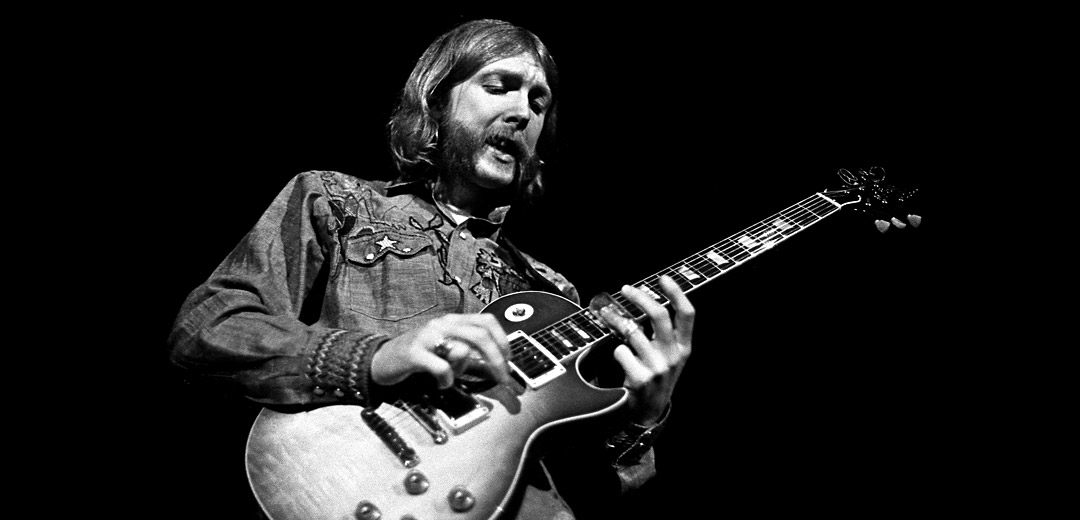
Duane Allman (Allman Brothers Band) (1946-1971)
Motorcycle accident. Allman was riding his motorcycle toward an oncoming truck that was turning well in front of him. The truck suddenly stopped in mid-intersection. Allman lost control of his Harley-Davidson motorcycle while trying to swing left, possibly striking the back of the truck or its crane ball. He was thrown from his motorcycle, which landed on him and skidded with him under it, crushing his internal organs.
25
Scott La Rock (Boogie Down Productions) (1962-1987)
Shot to death while trying to defuse a violent situation. His friend and BDP associate D-Nice had been threatened by some local hoods, and asked him to try to help defuse the situation. Later that day, he, D-Nice and some friends, drove in their Jeep to the Highbridge Projects building where the offending parties lived on Morris Avenue in the South Bronx; his' intention, along with the rest of the crew, was to try to defuse the situation. As they were leaving, bullets ripped through the side and top of the Jeep. He was hit in the neck.
Frankie Lymon (1942-1968)
Heroin overdose. After he was signed by manager Sam Bray to his Big Apple label, he celebrated his good fortune by taking heroin, staying at his grandmother's house in Harlem where he had grown up.
Tommy Bolin (Deep Purple) (1951-1976)
Unspecified drug overdose. His death followed a night of hard partying that had involved beer, champagne, cocaine and finally, heroin.
Johnny Ace (1929-1954)
Russian roulette. During a break between sets, he was playing with a .22 cal revolver. Members of his band said he did this often, sometimes shooting at roadside signs from their car. It was widely reported that Ace killed himself playing Russian roulette. Big Mama Thornton's bass player, who witnessed the event, said, "I will tell you exactly what happened! Johnny Ace had been drinking and he had this little pistol he was waving around the table and someone said ‘Be careful with that thing…’ and he said ‘It’s okay! Gun’s not loaded…see?’ and pointed it at himself with a smile on his face and ‘Bang!’ – sad, sad thing. Big Mama ran outta that dressing room yelling ‘Johnny Ace just killed himself!"
2Pac (1971-1996)
Shot in a drive-by shooting in Las Vegas. While stopped at a red light, a vehicle occupied by two women pulled up on their right side. Shakur, who was standing up through the sunroof, exchanged words with the two women, and invited them to go to Club 662. Right after, a white, four-door, late-model Cadillac with an unknown number of occupants pulled up to the other side, rolled down one of the windows, and rapidly fired a volley of gunshots at Shakur; bullets hit him in the chest, pelvis, and his right hand and thigh. One of the rounds apparently ricocheted into Shakur's right lung. Because of the acrimony between Shakur and Biggie, there was speculation from the outset about the possibility of Biggie's involvement.

Randy Rhoads (Quiet Riot) & (Ozzy Osbourne) (1956-1982)
Plane crash. After joyriding a small plane. After driving with the band much of the night, they stopped on the property belonging to Jerry Calhoun, owner of "Florida Coach" . On it, there was a small airstrip lined with small helicopters and planes, and two houses. One belonged to the tour bus driver, Andrew Aycock. Aycock talked the band's keyboardist, Don Airey, into taking a test flight in a '55 Beechcraft Bonanza F-35. By some accounts the manager, Jake Duncan, was also on this first flight. The joyride ended, and the plane landed safely. Then Aycock took Rhoads and hairdresser/seamstress Rachel Youngblood on another flight. Airey persuaded Rhoads to go on the second flight, despite his fear of flying. Rhoads apparently agreed to go for two reasons: the seamstress had a heart condition so Aycock agreed to do nothing risky; also, Rhoads wanted to take an aerial photo as one of his hobbies was photography. During the second flight, attempts were made to "buzz" the tour bus where the other band members were sleeping. They succeeded twice, but the third attempt was botched. The left wing clipped the back side of the tour bus, tore the fiberglass roof then sent the plane spiraling. The plane severed the top of a pine tree and crashed into the garage of a nearby mansion, bursting into flames. Rhoads was killed instantly, as were Aycock, 36, and Youngblood, 58.
Paul Kossoff (Free) (1950-1976)
Heart failure. Kossoff's unhappiness with the end of Free and his drug addictions contributed to a drastic decline in the guitarist's health. On a flight from Los Angeles to New York, Paul Kossoff died from drug-related heart problems.
Clifford Brown (1930-1956)
Car crash. Brown and Richie Powell were being driven from Philadelphia to Chicago by Powell's wife Nancy for the band's next appearance. While driving on a rainy night, she lost control of the car and it went off the road. All three were killed in the resulting crash.

Otis Redding (1941-1967)
Plane crash. Redding, his manager, the pilot, and four members of The Bar-Kays were killed when his Beechcraft 18 airplane crashed into Lake Monona in Madison, Wisconsin. Redding's body was recovered the next day when the lake bed was searched.
26
James Honeyman-Scott (The Pretenders) (1956-1982)
Cocaine-induced heart attack. During a sessions with Stephen Doster in Austin, Honeyman Scott was called back to London for a band meeting with Chrissie Hynde and Martin Chambers that resulted in the dismissal of Pete Farndon from the Pretenders, due to Farndon's increasing substance dependence. Two days after the dismissal of Pete Farndon, Honeyman Scott was found dead of heart failure caused by cocaine intolerance.
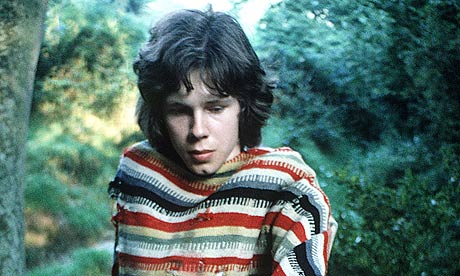
Nick Drake (1948-1974)
Anti-depressant overdose. Many stated that a result of "Acute amitriptyline poisoning — self-administered when suffering from a depressive illness", and concluded a verdict of suicide. Although there was no suicide note founded.
Jimmy McCulloch (Wings & Thunderclap Newman) (1953-1979)
He died from a heroin overdose in his flat.
Hillel Slovak (Red Hot Chili Peppers) (1962-1988)
Heroin overdose. Slovak and Anthony Kiedis became addicted to heroin early in their careers. Deciding to give sobriety a chance, both Kiedis and Hillel stopped using prior to their European tour in support of The Uplift Mofo Party Plan. During the tour both Kiedis and Hillel experienced intense heroin withdrawal - Hillel much more unstable than Kiedis - and upon returning home they both resumed their addictions. Little is known about his life the weeks following the tour, aside from a phone call to his brother, in which Hillel told him that he was taking medication to help alleviate his addiction. Slovak was found dead due to a heroin overdose, shortly after the band returned from the European tour.
Baby Huey (1944-1970)
Heart attack. James Ramey (aka Baby Huey) had developed an addiction to heroin, and his weight had increased to over 400 pounds. He began regularly missing gigs or turning up late, and, at the insistence of his bandmates, briefly entered rehabilitation in the spring of 1970. As as the heroin problem, Ramey was also drinking. Melvin Jones had described in his book an incident that took place, while pouring his breakfast cereal, Ramey's drug kit fell out of the box. James Ramey died of a heart attack and was found around noon in his hotel bathroom by his manager.
Toše Proeski (1981-2007)
Car crash. The Elvis Presley of the Balkans died in a car accident on the Zagreb–Lipovac highway, Croatia. He was a passenger along with his manager in a Volkswagen Touareg. The Touareg crashed into the back of a truck and then into the median barrier, killing Proeski instantly, crushing the third vertebrae of the neck, although the truck sustained no damage. Proeski was asleep in the front passenger seat at the time of the crash. The government organized an official state funeral.

Gram Parsons (The Byrds) (1946-1973)
Morphine overdose. In the late 1960s, Parsons became enamored of Joshua Tree National Monument in southeastern California. Alone or with friends, he would disappear in the desert for days searching for UFOs while under the influence of psilocybin or LSD. After splitting from Burrell, Parsons would frequently spend his weekends in the area with Margaret Fisher and Phil Kaufman. Before his tour was scheduled to commence in October 1973, Parsons decided to go on one more excursion. Less than two days after arriving, Parsons died from an overdose of morphine and alcohol. The amount of morphine consumed by Parsons would be lethal to three regular users and thus he had likely overestimated his tolerance considering his experience with opiates. Parsons' body disappeared from the Los Angeles International Airport where it was being readied to be shipped to Louisiana for burial. Prior to his death, Parsons stated that he wanted his body cremated at Joshua Tree; however, Parsons' stepfather arranged for a private ceremony back in New Orleans and neglected to invite any of his friends from the music industry. To fulfill Parsons' funeral wishes, Kaufman and a friend stole his body from the airport and in a borrowed hearse drove it to Joshua Tree where they attempted to cremate it by pouring five gallons of gasoline into the open coffin and throwing a lit match inside. What resulted was an enormous fireball.
Fats Navarro (1923-1950)
He was a heroin addict with tuberculosis, and he died from complications of both in a New York City hospital.
27
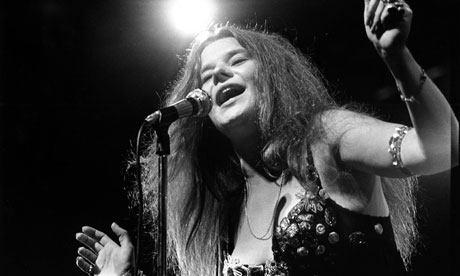
Janis Joplin (1943-1970)
Heroin overdose. The official cause of death was an overdose of heroin, possibly combined with the effects of alcohol. Presumably Joplin had accidentally been given heroin which was much more potent than normal, as several of her dealer's other customers also overdosed that week. Her last recording was a birthday greeting for John Lennon. Her taped greeting arrived at Lennon's home after her death.
Dave Alexander (The Stooges) (1947-1975)
Pulmonary edema. After he was fired from the band in August 1970 after showing up at a festival too drunk to play. He died of pulmonary edema in 1975 in Ann Arbor after being admitted to a hospital for pancreatitis, which was linked to his drinking.

Kurt Cobain (Nirvana) (1967-1994)
Suicide. Death by self-inflicted gunshot wound to the head. Cobain's body was discovered at his Lake Washington home by an electrician who had arrived to install a security system. Apart from a minor amount of blood coming out of Cobain's ear, the electrician reported seeing no visible signs of trauma, and initially believed that Cobain was asleep until he saw the shotgun pointing at his chin. A suicide note was found, addressed to Cobain's childhood imaginary friend "Boddah", that said, paraphrasing, "I haven't felt the excitement of listening to as well as creating music, along with really writing . . . for too many years now". A high concentration of heroin and traces of Valium were also found in his body.
Robert Johnson (1911-1938)
Strychnine poisoning. A story often told is that one evening Johnson began flirting with a woman at a dance; the wife of the juke joint owner, unaware that the bottle of whiskey she gave to Johnson had been poisoned by her husband. In another version, she was a married woman unrelated to the juke joint owner. Johnson was allegedly offered an open bottle of whiskey that was laced with strychnine. Fellow blues legend Sonny Boy Williamson allegedly advised him never to drink from an offered bottle that had already been opened. According to Williamson, Johnson replied, "Don't ever knock a bottle out of my hand." Soon after, he was offered another open bottle of whiskey, also laced with strychnine, and accepted it. Johnson is reported to have begun feeling ill the evening after drinking from the bottle and had to be helped back to his room in the early morning hours. Over the next three days, his condition steadily worsened and witnesses reported that he died in a convulsive state of severe pain—symptoms which are consistent with strychnine poisoning.
Richey Edwards (Manic Street Preachers) (1967-1995)
Disappeared. In the two weeks before his disappearance, Edwards withdrew £200 a day from his bank account, which totalled £2800. He checked out of the Embassy Hotel in London at seven in the morning, and then drove to his apartment in Cardiff, Wales. In the two weeks that followed he was apparently spotted in the Newport passport office, and the Newport bus station. A taxi driver from Newport, supposedly picked up Edwards from the King's Hotel in Newport, and drove him around the valleys, including Blackwood (Edwards’ home as a child). Edwards' Vauxhall Cavalier received a parking ticket at the Severn View service station and 3 days later, the vehicle was reported as abandoned. Police discovered the battery to be flat, with evidence that the car had been lived in. Due to the service station's proximity to the Severn Bridge (which has been a renowned suicide location in the past) and Edwards' depressed state at the time, it was widely believed that he took his own life by jumping from the bridge. His status remained open as a missing person, until 2008, when he became officially "presumed dead".
Alan Wilson (Canned Heat) (1943-1970)
Unspecified drug overdose. Although Wilson had reportedly attempted suicide twice before and his death is sometimes reported as a suicide, this is not clearly established as he left no note.
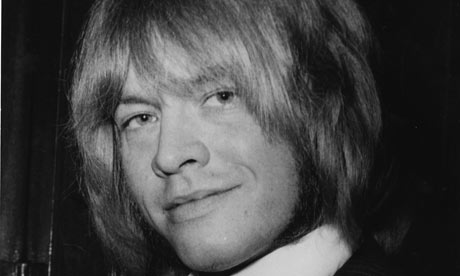
Brian Jones (The Rolling Stones) (1942-1969)
Death by misadventure in his swimmingpool, while his liver and heart were heavily enlarged by drug and alcohol abuse. Jones was living at Cotchford Farm in East Sussex, the residence formerly owned by Winnie-the-Pooh author A. A. Milne. Jones was discovered motionless at the bottom of his swimming pool. His Swedish girlfriend was convinced he was alive when they took him out, insisting he still had a pulse. However, by the time the doctors arrived, it was too late, and he was pronounced dead. In 2009 the Sussex Police had decided to review Brian Jones' death for the first time since 1969, after new evidence was handed to them by Scott Jones, an investigative journalist. Scott Jones has traced many of the people who were at Brian Jones' house the night he died, plus unseen police files held at the National Archives. He said a builder who had been renovating the house, Frank Thorogood, killed Brian Jones in a fight and the senior police officers covered up the true cause of death.
Jacob Miller (Inner Circle) (1952-1980)
Car accident. Jacob Miller went with Bob Marley and Chris Blackwell to Brazil to celebrate Island opening new offices in South America. Later the same month, he was killed in a car accident in Kingston, Jamaica.
Kristen Pfaff (Hole) (1976-1994)
Heroin overdose. Pfaff was found dead in her apartment by a friend with whom she had planned to leave for Minneapolis that day. On the floor there was a bag containing syringes and heroin paraphernalia. Sometime overnight, Pfaff had died from a heroin overdose.
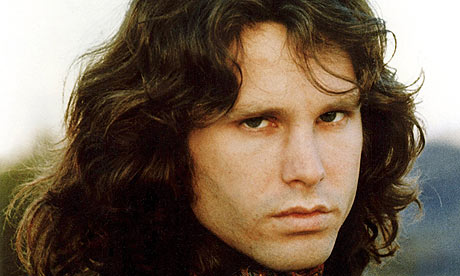
Jim Morrison (The Doors) (1943-1971)
Official cause of death is recorded as heart failure. He was found in a Paris apartment bathtub. Pursuant to French law, no autopsy was performed because the medical examiner claimed to have found no evidence of foul play. The absence of an official autopsy has left many questions regarding Morrison's cause of death. His girlfriend Pamela Courson stated that Morrison had died of a heroin overdose, having inhaled what he believed to be cocaine. The second manager from The Doors Danny Sugerman added that Courson had given numerous contradictory versions of Morrison's death, at times saying that she had killed Morrison, or that his death was her fault. Courson's story of Morrison's unintentional ingestion of heroin, followed by accidental overdose, is supported by the confession of Alain Ronay, who has written that Morrison died of a hemorrhage after snorting Courson's heroin, and that Courson nodded off, leaving Morrison bleeding to death instead of phoning for medical help.
D. Boon (The Minutemen) (1958-1985)
Road accident. Because he had been sick with fever, Boon was lying down in the rear of the van of the Minutemen, without a seatbelt when the van ran off the road. Boon was thrown out the back door of the van and died instantly from a broken neck.
Ron "Pigpen" McKernan (The Grateful Dead) (1945-1973)
Gastrointestinal hemorrhage. McKernan had a short relationship and longer friendship with Janis Joplin. While his friends were experimenting with LSD and other psychedelics, McKernan stuck to Thunderbird wine and Southern Comfort. In 1970, McKernan began experiencing symptoms of congenital biliary cirrhosis. After a hospitalization, doctors requested that he stop touring indefinitely. On March 8, 1973, he was found dead of a gastrointestinal hemorrhage at his home in Corte Madera, California.
Leslie Harvey (Stone The Crows) (1944-1972)
Electrocuted. It was while on stage with Stone the Crows at Swansea Top Rank in 1972 that he was killed, elecrtocuted by touching a microphone that was not earth grounded with his wet hands (an ungrounded metal mic will not cut the power by tripping a breaker or blowing a fuse and it then becomes part of the energized circuit and a shock or electrocution hazard).
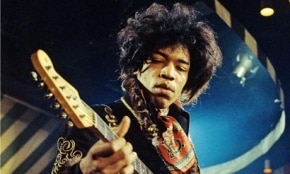
Jimi Hendrix (1942-1970)
Respiratory arrest caused by alcohol and barbiturate overdose and vomit inhalation. Jimi Hendrix died in London. He had spent the latter part of the evening at a party and was picked up by girlfriend Monika Dannemann and driven to her flat at the Samarkand Hotel, Notting Hill. Dannemann claimed in her original testimony that after they returned to her lodgings the evening before, Hendrix, unknown to her, had taken nine of her prescribed Vesperax sleeping pills. The normal medical dose was half a tablet, but Hendrix was unfamiliar with this very strong German brand. According to the doctor who initially attended to him, Hendrix had asphyxiated in his own vomit, mainly red wine which had filled his airways, as the autopsy was to show.
Chris Bell (Big Star) (1951-1978)
Road accident. Bell dies when he lost control of his small Triumph TR-7 sports car. He was on his way home from his father's restaurant in East Memphis. The car struck a wooden light pole on the side of the road, killing him instantly.
Pete de Freitas (Echo & The Bunnymen) (1961-1989)
Motorcycle accident. He died in a motorcycle accident on his way to Liverpool from London.
Suicide. During the Warner Bros. Records era from 1973–75, Badfinger became embroiled in many internal, financial and managerial problems and their music was stifled. By 1975, with no income and the band's business manager non-communicative, Ham became despondent and he hanged himself in the garage of his Surrey home. His blood alcohol was .27%. He left behind a pregnant girlfriend (his daughter was born one month after his death). Ham was a sensitive man. His suicide note had the statement "I will not be allowed to love and trust everybody. This is better." And an accusatory blast toward Badfinger's business manager, Stan Polley, with Ham writing: "P.S. Stan Polley is a soulless bastard. I will take him with me." Others of Polley's artist and business clients accused him of corruption over the years.
Garry Thain (Uriah Heep) (1948-1975)
Born in Christchurch, New Zealand, Thain was part of the rock trio The New Nadir, and with the drummer Peter Dawkins, he travelled from New Zealand to London, and once jammed with Jimi Hendrix before the trio split in 1969.Thain joined the Keef Hartley Band and, in 1971, they toured with Uriah Heep; they asked him to join them (replacing Mark Clarke) in February 1972, and he stayed in the band until February 1975. He played on four studio albums: Demons & Wizards, The Magician's Birthday , Sweet Freedom and Wonderworld as well as their live album, entitled Uriah Heep Live. During his last tour with Uriah Heep, Thain suffered an electric shock at the Moody Coliseum in Dallas, Texas on 15 September 1974, and was seriously injured. Due to his drug addiction he was not able to perform properly, and was fired by the band in early 1975 and replaced by former King Crimson bassist/vocalist, John Wetton. Thain died of respiratory failure due to a heroin overdose, on 8 December 1975, aged 27.
Amy Winehouse (1983-2011)
was an English singer-songwriter known for her powerful deep contralto vocals and her eclectic mix of musical genres including R&B, soul and jazz. Winehouse was found dead on 23 July 2011 at her home in London. On 26 October 2011 a coroner ruled that alcohol poisoning was the cause of death. Winehouse's family and friends attended her funeral on 26 July 2011. In August 2011 her album Back to Black became the UK's best selling album of the 21st century. Winehouse's final recording, a duet entitled "Body and Soul" with Tony Bennett, was released on 14 September 2011 to commemorate what would have been her 28th birthday. Proceeds from the song will go to the Amy Winehouse Foundation "to support charitable activities in both the UK and abroad that provide help, support or care for young people, especially those who are in need by reason of ill health, disability, financial disadvantage or addiction".
28
Jimmy Fernandez (The God Machine) (1966-1994)
Brain tumor. He suddenly died from a cancerous brain tumour after recording their second album in Prague.
Jason Thirsk (Pennywise) (1967-1996)
Suicide. Thirsk, who had been in rehabilitation for alcoholism and also suffered from depression, died of a self-inflicted gunshot wound.
Bradley Nowell (Sublime) (1968-1996)
Heroin overdose. Seven days after Nowell's marriage, Sublime embarked on a five-day tour through Northern California cities. The following morning, in San Francisco, drummer Bud Gaugh woke up to find Nowell lying half way across a bed, with his knees and feet on the floor. At first, Gaugh assumed he had been too intoxicated to get into bed; however, further inspection allowed him to notice a green film around his mouth, and it became obvious that he had overdosed on heroin. Gaugh called for paramedics, but Nowell had died several hours earlier, and was pronounced dead at the scene.

Shannon Hoon (Blind Melon) (1967-1995)
Cocaine overdose. Hoon had no squeaky-clean image; he was arrested for indecent exposure after he disrobed onstage and urinated on a fan at a show in Vancouver. While opening for Lenny Kravitz, Hoon came onstage in Orlando, Florida openly smoking marijuana. When Blind Melon appeared at Woodstock '94, Hoon went onstage wearing his girlfriend's dress, while tripping on acid. Throughout the performance, Hoon baited the audience and ended the set by tossing a set of conga drums into the crowd. Also in 1994, Hoon went on a drug-induced rampage at the Billboard Music Awards when he attacked a security guard. After the birth of his daughter, Hoon entered rehab. When he planned to tour with Blind Melon Hoon negotiated an early release from his drug rehab program with the stipulation that his drug counselor would accompany him on the road. The counselor, however, was unable to keep Hoon from falling back into a pattern of drug use and was dismissed from the tour after less than a month. Without the counselor, Hoon's use of drugs escalated. After a performance in Houston in which Hoon was not proud of, Hoon launched into an all-night drug binge. The next day, Blind Melon was scheduled to play a show in New Orleans at Tipitina's. When one of the band's roadies went to the tour bus to wake Hoon up for a sound check, he was unable to wake him. An ambulance was summoned and Hoon was pronounced dead on the scene. The cause of death was attributed to a drug overdose.
Tim Buckley (1947-1975)
Heroin/morphine overdose. Buckley celebrated the culmination of the tour with a weekend of drinking with his band and friends, as was his normal routine. In the evening, Buckley decided to accompany long-time friend Richard Keeling back to his house in the hope of obtaining some heroin. After spending an hour or so at the house, Buckley, in his inebriated state, walked in on Keeling while he was having sex, causing an argument between the two. Keeling, with the aim of placating him, handed Buckley a large dose of heroin and challenged him to "Go ahead, take it all". Given Buckley's contrary and rebellious nature, he duly snorted all the drug laid out for him. Following this, Buckley was in such a bad condition that friends chose to take him home rather than leave him to his own devices. Upon his return home, his wife Judy, seeing his inebriated state, laid him down on a pillow on their living room floor and proceeded to question his friends as to what had happened. Soon Judy moved Buckley into bed. Checking on him later, she found he had turned blue and was no longer breathing. Attempts by friends and paramedics to revive him were unsuccessful and he was pronounced dead on arrival.
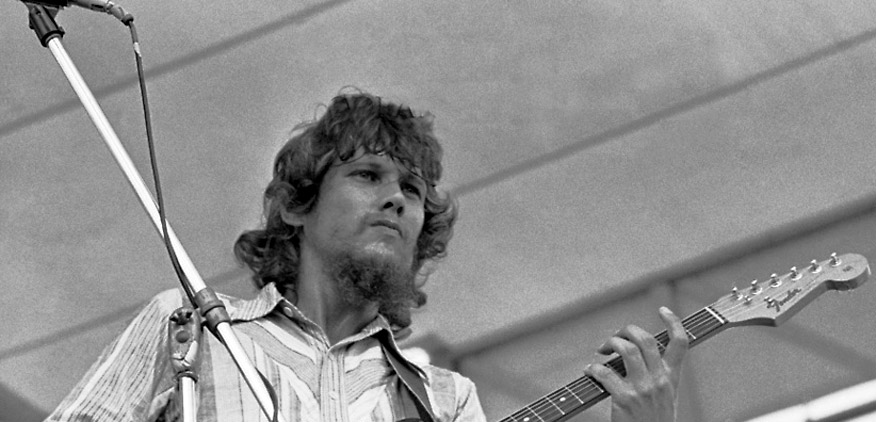
Steve Gaines (Lynyrd Skynyrd) (1949-1977)
Plane crash. Aircraft stalled due to fuel exhaustion during emergency landing attempt. Three days after a new album was released (and four dates into the band's most successful tour yet), a plane carrying the band between shows from South Carolina to Louisiana, crashed outside of Gillsburg, Mississippi. Steve Gaines was killed on impact. The crash also killed Ronnie Van Zant, Steve's sister, the assistant road manager, as well as the pilot and the co-pilot.
The Rev (Avenged Sevenfold) (1981-2009)
His body was found in his home. His death was reported as due to natural causes. The results of the autopsy performed however, were inconclusive. The cause of death was revealed to have been an acute polydrug intoxication due to combined effects of oxycodone (OxyContin), oxymorphone (a metabolite of oxycodone), diazepam (Valium), nordiazepam (a metabolization of diazepam) and alcohol.
Big Bopper (1930-1959)
Plane crash. Together with Buddy Holly and Ritchie Valens, he flew out of the Mason City airport in a small plane that Holly had chartered. The plane flew into a blinding snowstorm and crashed shortly after takeoff. This is known as "The Day The Music Died". Buddy Holly's bass player, Waylon Jennings, was scheduled to fly on the plane but gave his seat up to the Big Bopper, who was suffering from the flu.
29
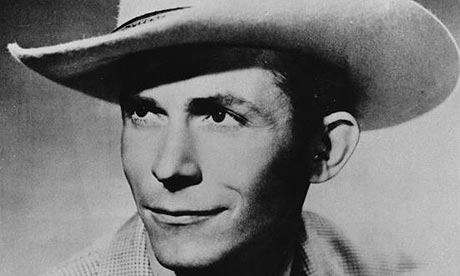
Hank Williams (1923-1953)
Heart failures caused by overdose. Williams was due to play at a New Year's Day concert in Canton, Ohio, but he was unable to fly due to weather problems with snow and ice in Ohio. He hired a college student, Charles Carr, to drive him to the concerts he was to perform during the few final days of 1952 and early 1953. Upon leaving in Knoxville, Tennessee, Williams apparently had injected himself with some pain-killers which included a morphine/Vitamin B-12 combination. Also found in the Cadillac convertible were some empty beer cans and the handwritten lyrics to a song yet to be recorded. According to some, Williams was carried semi-conscious to his automobile by Carr and a hotel employee, who wondered about Williams' condition, and later believed he might have been dead at that point.
Ronnie Van Zant (Lynyrd Skynyrd) (1948-1977)
Plane crash. Aircraft stalled due to fuel exhaustion during emergency landing attempt. Three days after a new album was released (and four dates into the band's most successful tour yet), a plane carrying the band between shows from South Carolina to Louisiana, crashed outside of Gillsburg, Mississippi. Van Zant was killed on impact. The crash also killed Steve Gaines, Steve's sister, the assistant road manager, as well as the pilot and the co-pilot.
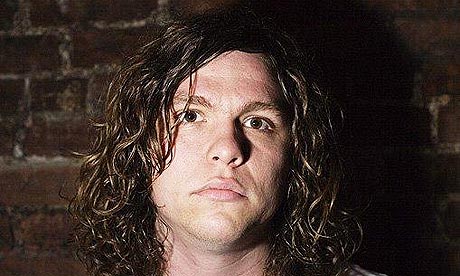
Jay Reatard (1980-2010)
He was found in his bed in his home in Memphis by a roommate. A statement was posted on the website of Goner Records, that Reatard had died in his sleep. Friends of Lindsey stated that he had recently complained of flu-like symptoms. An autopsy was performed by the medical examiner. Memphis's Commercial Appeal reported that he had died of "cocaine toxicity, and that alcohol was a contributing factor in his death."
Danny Whitten (Neil Young and Crazy Horse) (1943-1972)
Drug and alcohol overdose. As did so many other rock musicians in the late 1960s, Whitten began using heroin and quickly became addicted. Although he participated in the early stages of Neil Young's next solo effort, Whitten and the rest of Crazy Horse were dismissed about halfway through the recording sessions, in part because of Whitten's heavy drug use. Young wrote and recorded "The Needle and the Damage Done" during this time, with direct references to Whitten's addiction and its role in the destruction of his talent. Unfortunately, Whitten continued to drift, his personal life ruled almost totally by drugs which lead to kicking out of Crazy Horse. Neil gave Danny $50.00 and a plane ticket back to Los Angeles. Later that night Danny overdosed on a mixture of Valium and Vodka.
Ingo Schwichtenberg (Helloween) (1965-1995)
Suicide. Schwichtenberg was ejected from the band during a tour. The dismissal was reportedly due to Ingo's dependence on alcohol and drugs (most notably cocaine and hashish). Ingo also suffered from schizophrenia, and his refusal to take his medication would lead to bizarre episodes such as uncontrollable sobbing, which made it impossible for him to take the stage. After his ejection from the band, Schwichtenberg slid further and further into his schizophrenic episodes, culminating in his suicide by jumping in front of a subway train.
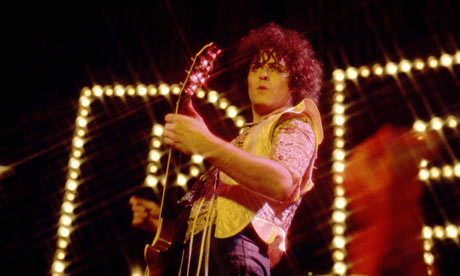
Marc Bolan (T. Rex) (1947-1977)
Road accident. He was a passenger in a purple Mini 1275GT driven by his girlfriend Gloria Jones as they headed home from a drinking club and restaurant in Berkeley Square. Jones lost control of the car and it struck a sycamore tree after failing to negotiate a small humpback bridge near Gipsy Lane on Queens Ride, southwest London. Bolan died instantly, while Jones suffered a broken arm and broken jaw and spent time in hospital.
Helno (Les Négresses Vertes) (1963-1993)
Drug overdose. Helno was struggling with serious heroin addiction. He died at his parents' house.
30
Jim Croce (1943-1973)
30
Jim Croce (1943-1973)
Plane crash. Croce had just completed a concert Louisiana and was flying to Texas for a concert at Austin College. The pilot and all passengers were killed instantly, less than an hour after the end of the concert. Upon takeoff from the airport, despite excellent visibility, the small commercial plane did not gain enough altitude to clear a pecan tree at the end of the runway, which investigators said was the only tree for hundreds of yards. The official report hints that the charter pilot, who had severe coronary artery disease and had run a portion of the three miles to the airport from a motel, may have suffered a heart attack. A later investigation, placed sole blame for the accident on pilot error.
Andy Gibb (1958-1988)
Heart failure. Also known as "the baby-brother of The Bee Gees" he died as a result of myocarditis, an inflammation of the heart muscle due to a recent viral infection.
Jeff Ward (Nine Inch Nails & Revolting Cocks & Ministry) (1962-1993)
Suicide. He locked himself in his car in his garage and started it, dying of carbon monoxide poisoning.
Patsy Cline (1932-1963)
Plane crash. The plane flew into severe weather, however, and according to Cline's wristwatch, crashed in a forest outside of Camden, Tennessee, 90 miles from the destination. There were no survivors. Throughout the night, reports of the missing plane flooded the radio airwaves.
Chris Acland (Lush) (1966-1996)
Suicide. After Lush had completed their tour and music festival appearances, and two days after bandmate Emma Anderson announced a desire to quit the band, Acland committed suicide by hanging himself in his parents' house. His bandmates in Lush were devastated and disbanded after a period of mourning.
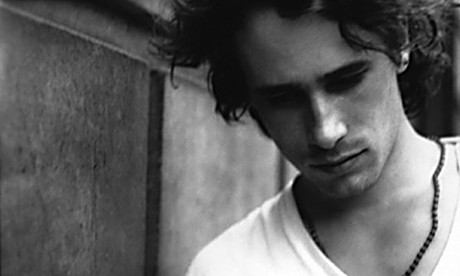
Jeff Buckley (1966-1997)
Drowned. On the same evening Buckley's band flew to Memphis intending to join him in his studio there to work on the newly-written material, Buckley went swimming in Wolf River Harbor, a slackwater channel of the Mississippi River, while wearing boots, all of his clothing, and singing the chorus of the song "Whole Lotta Love" by Led Zeppelin. Buckley had gone swimming there several times before. A roadie in Buckley's band, Keith Foti, remained on shore. After moving a radio and guitar out of reach of the wake from a passing tugboat, Foti looked up to see that Buckley had vanished. Despite a determined rescue effort that night, Buckley remained missing. Five days later his body was spotted by a tourist on a riverboat and was brought to land.
Steve Clark (Def Leppard) (1960-1991)
Drug overdose. Clark was found dead on his settee by his girlfriend. The autopsy revealed he had died from an overdose of codeine and had Valium, morphine and a blood alcohol level of .30, three times the British legal driving limit. There was no evidence of suicidal intent. Clark's drinking companion the night before, testified that the two went to the local pub and returned to the guitarist's home at midnight to watch a video.
Pete Farndon (The Pretenders) (1952-1983)
Drowned after a heroin overdose. By 1982, Farndon caused increasingly strained relations with his bandmates due to his drug use. He became increasingly belligerent, and he, according to Hynde, "was in bad shape. He was really not someone you could work with." Two days after Farndon's dismissal from the band, guitarist James Honeyman-Scott was found dead of heart failure caused by a cocaine overdose. Meanwhile, Farndon was in the midst of forming a new band with former Clash drummer Topper Headon - who was also battling heroin abuse, and left his band unable to cope with it - when Farndon was found dead by his American model wife, Conover, after passing out and drowning in his bathtub after a heroin overdose. This left The Pretenders with only two of their original four members.
Lisa Lopes (TLC) (1971-2002)
Road accident. She died in a car accident in Honduras. She was the sole fatality in the accident. Driving a Mitsubishi Pajero, Lopes allegedly tried to swerve around a truck, but there was another vehicle heading toward them in the opposite direction. To avoid a head-on collision, Lopes swerved all the way off the road. The vehicle rolled several times after hitting two trees, throwing Lopes and three others out the windows. She died of severe head trauma and neck injuries. The passenger in the front passenger seat was videotaping at the time, so the last seconds leading up to the swerve that resulted in the fatal accident were recorded on video.
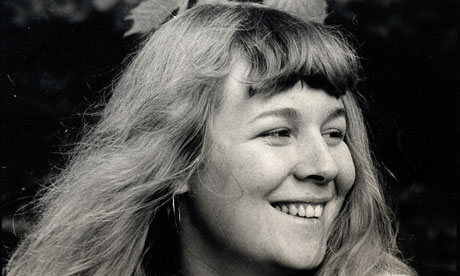
Sandy Denny (Fairport Convention) (1947-1978)
Cerebral hemorrhage. While on holiday with her parents in Cornwall, Denny was injured when she fell down a staircase. A month after the fall she collapsed at a friend's home; four days later she died in a hospital. Her death was ruled to be the result of a traumatic mid-brain hemorrhage.
31
Overdose. Heroin, cocaine, ecstasy, barbiturates and alcohol were found in his blood. The remaining members of EMF played just four more gigs in late 2002, before deciding to split up.
Complications from AIDS. He was admitted into a Medical Center in Los Angeles with what he believed to be asthma. Instead he was diagnosed with AIDS, and announced his illness in a public statement. He died due to "complications from AIDS" one month after his diagnosis. During his last week, having already made amends with Dr. Dre and Snoop Dogg, Eazy-E drafted his last message to fans. One week after making that announcement, he succumbed to the disease.
dwayne goettel (Skinny Puppy) (1964-1995)
Heroin overdose. Goettel died of an apparent heroin overdose in a bathroom at his parents' home in Edmonton, Alberta. As a bandmate told Rolling Stone magazine, Goettel had just returned to his parents' house to kick his habit.
Minnie Riperton (1947-1979)
Breast cancer. In 1976 Riperton was diagnosed with breast cancer and underwent a radical mastectomy. By the time of diagnosis, the cancer had metastasized and she was given about six months to live. Despite the grim prognosis, she continued recording and touring. Riperton was one of the first celebrities to go public with her breast cancer diagnosis, but did not disclose that she was terminally ill. In 1977, she became spokesman for the American Cancer Society. In 1978, Riperton also received the American Cancer Society's Courage Award which was presented to her at the White House by President Jimmy Carter. She died at age 31 in 1979
Bobby Sheehan (Blues Traveler) (1968-1999)
Unspecified drug overdose.
Robert Burås (Madrugada) (1975-2007)
Presumed suicide. Burås was found dead in his apartment by a friend, with his guitar in his hand.
Little Willie John (1937-1968)
Heart attack. Willie John was known for his short temper and propensity to abuse alcohol, and was dropped by his record company in 1963. In 1966, he was convicted of manslaughter and sent to Washington State Penitentiary for a fatal knifing incident following a show in Seattle. He appealed against his conviction and was released while the case was reconsidered, during which time he recorded what was intended to be his comeback album, but due to contractual wrangles, and the failure of his appeal, it was not released. Little Willie John died in 1968 at Washington State Penitentiary in Walla Walla, Washington. Despite counter claims, the official cause of death was listed in his death certificate as a heart attack.
Lynden David Hall (1974-2006)
Hall was diagnosed with Hodgkin's lymphoma; he died from complications resulting from the stem cell transplant he received in January 2005. Hall was in remission at the time of his death.
Terry Kath (Chicago) (1946-1978)
Russian roulette. Kath reportedly had a history of using alcohol and other drugs, including cocaine. He struggled with weight problems, and by 1976 he was quite overweight. Chicago bandmates have indicated that he was also increasingly unhappy. Bassist Peter Cetera even went so far as to say that Kath would have been the first to quit Chicago had he lived; and according to then-producer, Kath was working on a solo album before he died. Despite his personal problems, this was not the cause of his accidental death. After a party at roadie/band technician Don Johnson's home in Woodland Hills, Los Angeles, Kath took an unloaded .38 revolver and put it to his head, pulling the trigger several times on the empty chambers. Johnson had warned Kath several times to be careful. Kath then picked up a semiautomatic 9 mm pistol and, leaning back in a chair, said to both his wife and Johnson, "Don't worry, it's not loaded". After showing the empty magazine to Johnson, Kath replaced the magazine in the gun, put the gun to his temple, and pulled the trigger. There was a bullet in the chamber, and he died instantly.
32

Keith Moon (The Who) (1946-1978)
Overdose on anti-seizure medication prescribed for alcoholism. After dining with Paul McCartney, Moon and his girlfriend, returned to a flat on loan from Harry Nilsson, Shepherd Market, Mayfair in which Cass Elliot had died four years earlier. Moon then took 32 tablets of Clomethiazole (Heminevrin). The medication was a sedative he had been prescribed to alleviate his alcohol withdrawal symptoms as he tried to go dry on his own at home; he was desperate to get clean, but was terrified of another stay in the psychiatric hospital for in-patient detoxification. However, Clomethiazole is specifically contraindicated for unsupervised home detox because of its addictiveness, tendency to rapidly induce drug tolerance and dangerously high risk of death when mixed with alcohol. The pills were also prescribed by a new doctor, who was unaware of Moon's recklessly impulsive nature and long history of prescription sedative abuse. He had given Moon a full bottle of 100 pills, and instructed him to take one whenever he felt a craving for alcohol (but not more than 3 per day). The police determined there were 32 pills in his system, with the digestion of 6 being sufficient to cause his death, and the other 26 of which were still undissolved when he died.
Ricky Wilson (The B 52's) (1953-1985)
AIDS. During recording sessions for the band's third studio album Whammy!, Wilson discovered he had contracted AIDS/HIV-related health complications. In 1985, during recording for their album Bouncing off the Satellites, Wilson's illness became more severe; despite this, he kept his illness secret from the other members of the band[ says Keith Strickland; in an interview, fellow band member Kate Pierson stated that Wilson had kept his illness secret from his fellow band members because he "did not want anyone to worry about him or fuss about him." Later that year, in the Memorial Sloan–Kettering Cancer Center, Wilson finally succumbed to the illness, at the age of 32.
Chalino Sánchez (1960-1992)
Murdered. He made his breakthrough, in terms of publicity, in January 1992. That evening, he was performing at a club in Coachella, California when a patron came up to the stage, pulled a gun, and shot Chalino in the side. Chalino immediately pulled a gun of his own and returned fire. By the end of the evening, the would-be killer was shot to death with his own gun, one other person died on the way to a hospital, and at least five others were wounded. (It was generally believed in Sinaloa that the death toll was higher.) At a concert in Mexico, Chalino Sanchez received a letter containing a death threat and walked off stage immediately. In May 1992, Chalino was being transported in a Chevy Suburban through the streets of Culiacán, Mexico. After about 20 minutes, the Suburban was driving near a secluded location when an unmarked Federal Police Vehicle intercepted them and forced them to the side of the road. At approximately 06:00 in the morning, Chalino's lifeless body was discovered on the side of a road with two gunshot wounds to the back of the head. The next day, newspapers in Sinaloa read, "Chalino Sánchez, Secuestrado, y Ejecutado" (Chalino Sánchez, Kidnapped and Executed).
Murdered. Proof was killed by a gunshot wound to the head at a club by club bouncer Mario Etheridge on 8 Mile Road in Detroit, Michigan after fatally shooting U.S. military veteran Keith Bender Jr. While playing a game of pool, Proof and Bender got into a heated argument. After a physical altercation, Etheridge fired his gun into the air to try to stop the situation, but Proof shot Bender in the head. Etheridge, who was Bender's cousin, then shot Proof three times in the head and chest. Proof was killed, and Bender died a week later. Proof's blood alcohol content at the time of his death was 0.32 percent, four times the level that qualifies someone for a drunken driving conviction; he had no other drugs in his system.
Rob Collins (The Charlatans) (1963-1996)
Car crash. Collins began to record keyboard and organ parts for the Charlatans 5th album but was killed in a car crash on a country road in Wales just before sessions were completed. An investigation into the accident showed that Collins had consumed a sizable amount of alcohol and was not wearing a seatbelt. He died from head injuries on the roadside shortly after the accident having been thrown through the windscreen. Investigators concluded that he probably would not have died had he worn a seat belt.

Divine (1945-1988)
Sleep apnea. One week after Hairspray was released, Divine was staying at the Regency Hotel in Los Angeles. The next day, he auditioned for a part in the Fox network's television series Married... with Children. After dining with friends and returning to the hotel, he died in his sleep of sleep apneu and an enlarged heart.
Florence Ballard (The Supremes) (1943-1976)
Coronary thrombosis. Ballard entered the hospital, complaining of numbness in her extremities. The next day, she died of coronary thrombosis, a blood clot in one of her coronary arteries.
Cass Elliott (The Mamas and The Papas) (1941-1974)
Heart attack. At the height of her solo career in 1974, Elliot performed two weeks of sold-out concerts at the London Palladium. She telephoned Michelle Phillips after the final concert, utterly elated that she had received standing ovations each night. She then retired for the evening, and died in her sleep. Sources state her death was due to a heart attack. Elliot died in a London flat, which was on loan from singer/songwriter Harry Nilsson. Four years later, The Who's drummer Keith Moon died in the same flat. Despite the cause of death being a heart attack, an oft repeated urban myth states that Elliot died choking on a ham sandwich. The story, which started following the discovery of her body, was based on speculation in the initial media coverage. Police had told reporters that a partly eaten sandwich found in her room might have been to blame even though an autopsy had not been conducted. Despite the post-mortem examination finding that Elliot had in fact died of a heart attack and no food was found in her windpipe, the story that she had choked has persisted in the years following her death.
Keith Relf (The Yardbirds) (1943-1976)
Electrocution. He died from electrocution, at his home while playing his improperly grounded electric guitar.
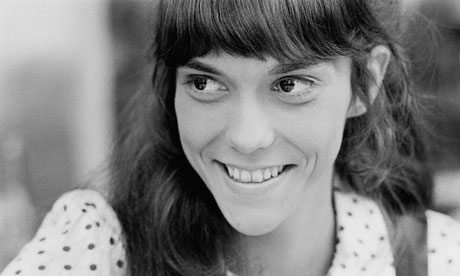
Karen Carpenter (The Carpenters) (1950-1983)
Complications from anorexia nervosa. The autopsy stated that Karen's death was the result of emetine cardiotoxicity due to anorexia nervosa. Under the anatomical summary, the first item was heart failure, with anorexia as second. The third finding was cachexia, which is extremely low weight and weakness and general body decline associated with chronic disease. Emetine cardiotoxicity implies that Karen abused ipecac syrup, an easily obtained emetic medicine that is only meant to be taken by persons who have accidentally swallowed poison.
Doug Hopkins (Gin Blossoms) (1961-1993)
Suicide. Hopkins had suffered from chronic depression since childhood and had been battling alcoholism for several years. However, in 1990, the Gin Blossoms were one of the hottest local bands in Tempe and the surrounding areas, and they signed a contract with A&M Records. He was resistant to signing to a major label, feeling like its property, and reacted with stubbornness and more drinking. When the band recorded its debut album "New Miserable Experience", it was reported that Hopkins was unable to stand during his recording sessions. Faced with the prospect of firing Hopkins or being dropped by A&M, the band terminated Hopkins. Doused in aftershave and mouthwash to cover the effects of his days-long drinking binge, he was flown back to Arizona. He was replaced by Scott Johnson. As a result, the band withheld $15,000 owed to Hopkins until he agreed to sign over half of his publishing royalties. While "New Miserable Experience" did not make a strong debut, it went on to become a multi-platinum album. As the Gin Blossoms experienced mounting success, performing songs he had written, Hopkins became increasingly despondent. Though he had always dreamed of having a gold record, when he received one for the song "Hey Jealousy", he hung it up for two weeks before taking it down and then destroying it. Nine days later, during an intake consultation in the detox, Hopkins snuck out and bought a .38 caliber pistol. The next day Hopkins committed suicide.

John Bonham (Led Zeppelin) (1948-1980)
Alcohol overdose. Bonham was picked up by Led Zeppelin assistant Rex King to attend rehearsals at Bray Studios for an upcoming tour of the U.S.; the band's first since 1977. During the journey, Bonham had asked to stop for breakfast, where he drank four quadruple vodkas (sixteen shots, amounting to about 480 ml). He then continued to drink heavily when he arrived at the rehearsals. A halt was called to the rehearsals late in the evening and the band retired to Jimmy Page's house. After midnight, Bonham had fallen asleep and was taken to bed and placed on his side. John Paul Jones found him dead the next afternoon. Weeks later at the coroner's inquest, it emerged that in the 24 hours before he died, John Bonham had consumed forty shots of vodka which resulted in him vomiting and subsequent aspiration (inhaling) of his vomit, causing asphyxiation. A verdict of accidental death was returned at an inquest held. An autopsy had found no other drugs in Bonham's body.
35
Matthew Ashman (Bow Wow Wow) (1960-1995)
Phil Ochs (1940-1976)
Suicide. Ochs's drinking became more and more of a problem, and his behavior became increasingly erratic. He frightened his friends both with his drunken rants about the FBI and CIA, and about his plans to have Colonel Tom Parker or Colonel Sanders manage his career. In mid-1975, Ochs took on the identity of John Butler Train. He told people that Train had murdered Ochs, and that he, John Butler Train, had replaced him. Train was convinced that someone was trying to kill him, so he carried a weapon at all times: a hammer, a knife, or a lead pipe. Ochs's friends tried to help him. His brother attempted to have him committed to a psychiatric hospital. Friends pleaded with him to get help voluntarily. They feared for his safety, because he was getting into fights with bar patrons. He couldn't pay his rent, and started living on the streets. After several months, the Train persona faded and Ochs returned, but his talk of suicide disturbed his friends and family. They hoped it was a passing phase, but Ochs was determined. When Ochs moved to Far Rockaway, to live with his sister, he was lethargic; his only activities were watching television and playing cards with his nephews. Ochs saw a psychiatrist, who diagnosed his bipolar disorder. He was prescribed medication, and he told his sister he was taking it. Not much later, Ochs hanged himself. Years after his death, it was revealed that the FBI had a file of nearly 500 pages on Ochs. Much of the information in those files relates to his association with counterculture figures, protest organizers, musicians, and other people described by the FBI as "subversive".
Stevie Ray Vaughan (1954-1990)
Plane crash. In 1990 he was at a sold out concert in Wisconsin, featured an encore jam with Vaughan, Eric Clapton, Buddy Guy, Jimmie Vaughan and Robert Cray. The day after, a helicopter carrying Vaughan en route to Chicago crashed within seconds after takeoff caused by impact with hillside during fog/inclument weather. There were no survivors.
Blind Lemon Jefferson (1893-1929)
He died in Chicago in December 1929; neither the exact cause of death nor the exact date are known. For many years, apocryphal rumors circulated that a jealous lover had poisoned his coffee, but a more likely scenario is that he died due to a heart attack after becoming disoriented during a snowstorm (i.e., he froze to death). More recently, the book, "Tolbert's Texas," claimed that he was killed while being robbed of a large royalty cash payment by a guide escorting him to Union Station to catch a train home to Texas.
Ol' Dirty Bastard (Wu-Tang Clan) (1968-2004)
Overdose of cocaine and a prescription painkiller. Leading up to his early death, his legal troubles and odd behavior made him "something of a folk hero", according to The New Yorker. Critic Steve Huey writes that "it was difficult for observers to tell whether Ol' Dirty Bastard's wildly erratic behavior was the result of serious drug problems or genuine mental instability. He collapsed at The RZA's recording studio. He was pronounced dead less than an hour later. The official cause of death was a drug overdose; an autopsy found a lethal mixture of cocaine and the prescription drug Tramadol, a synthetic opiate. The overdose was ruled accidental and witnesses say that he complained of chest pain on the day he died.

Jaco Pastorius (Weather Report) (1951-1987)
Died in a coma. After sneaking onstage at a Carlos Santana-concert, and being ejected from the premises, Pastorius made his way to the Midnight Bottle Club in Wilton Manors, Florida. After reportedly kicking in a glass door after being refused entrance to the club, he was engaged in a violent confrontation with the club bouncer, Luc Havan. Pastorius was hospitalized for multiple facial fractures and damage to his right eye and left arm. He fell into a coma and was put on life support. There were initially encouraging signs that he would come out of his coma and recover, but a massive brain hemorrhage a few days later pointed to brain death. In the wake of Pastorius' death, Havan was charged with second degree murder but later pleaded guilty to manslaughter. Because of having no priors and with time served while waiting for the verdict, he was sentenced to 22 months in jail and five years probation. He was released after four months in jail for good behavior
36
Eric Dolphy (1928-1964)
He died accidentialy in Berlin. The circumstances of his passing are disputed. Seemed like Dolphy collapsed in his hotel room in Berlin and when brought to the hospital he was diagnosed as being in a diabetic coma. After being administered a shot of insulin (apparently a type stronger than what was then available in the US) he lapsed into insulin shock and died. A later documentary and liner note disputes this, saying Dolphy collapsed on stage in Berlin and was brought to a hospital. The attending hospital physicians had no idea that Dolphy was a diabetic and decided on a stereotypical view of jazz musicians, that he had overdosed on drugs. He was left in a hospital bed for the drugs to run their course.

Bob Marley (1945-1981)
Melanoma. In July 1977, Marley was found to have acral lentiginous melanoma, a form of malignant melanoma. Despite his illness, he wished to continue touring and was in the process of scheduling a world tour in 1980. The intention was for Inner Circle to be his opening act on the tour but after their lead singer Jacob Miller died in Jamaica in March 1980 after returning from a scouting mission in South America this was no longer mentioned. The album Uprising was released in May 1980 and the band completed a major tour of Europe, where they played their biggest concert, to a hundred thousand people in Milan. After the tour Marley went to America, where he performed two shows at Madison Square Garden as part of the Uprising Tour. Shortly afterwards, his health deteriorated and he became very ill; the cancer had spread throughout his body. The rest of the tour was canceled and Marley sought treatment at the Bavarian clinic, where he received a controversial type of cancer therapy partly based on avoidance of certain foods, drinks, and other substances. After fighting the cancer without success for eight months, he boarded a plane for his home in Jamaica. While flying home from Germany to Jamaica, accepting that he was going to die, Marley's vital functions worsened. After landing in Miami, he was taken to hospital for immediate medical attention. He died at Cedars of Lebanon Hospital in Miami. The spread of melanoma to his lungs and brain caused his death. His final words to his son Ziggy were "Money can't buy life".
Gene Vincent (1935-1971)
Natural causes. Vincent died from a ruptured stomach ulcer while visiting his father in California.
Phil Lynott (Thin Lizzy) (1949-1986)
Conflicting sources report various causes of death, including: heart and liver failure, heart failure and pneumonia after a drug overdose, and blood poisoning from heroin addiction. Lynott's last years were dogged by drug and alcohol dependency leading to his collapse on the night of 25 December 1985 at his home in Kew. After his estranged wife drove him to a drug clinic in East Knoyle, he was taken to Salisbury Infirmary where he was diagnosed as suffering from a kidney and liver infection. He died of heart failure and pneumonia.
GG Allin (1956-1993)
Heroin overdose. GG Allin is perhaps best remembered for his notorious live performances which typically featured transgressive acts, such as Allin defecating and urinating onstage, rolling in feces and often consuming excrement, performing naked, committing self-injury, and attacking audience members. Although more notorious for his stage antics than for his music, he recorded prolifically, not only in the punk rock genre, but also in spoken word, country, and more traditional-style rock. His extremely politically incorrect lyrics, which often covered subjects such as misogyny, pedophilia and racism, polarized listeners and created varied opinions of him within the highly politicized punk community. Though he had a devoted cult following, Allin's music was often poorly recorded and produced, and received mostly negative reviews from critics. Allin died of a heroin overdose, in the Manhattan apartment of John Handley Hurt and Dwanna Yount. His last show was at a small club, located across the street from Hurt and Yount's apartment. During the show's second song the power went out, after which he trashed the venue, walked across the street entirely naked, and then continued on (now wearing shorts, but still covered in blood and feces) through the neighborhood, followed by a large group of fans whom he both discouraged and openly embraced. During the night at the apartment, Allin snorted the large amounts of heroin (and some cocaine) which killed him. Those in the apartment posed for photos with Allin around 2 a.m., not knowing that he was already in the early stages of respiratory failure. The next morning, some noticed that Allin still lay motionless in the same place where they had left him and called for an ambulance. Allin was pronounced dead at the scene.
Mary Hansen (Stereolab) (1966-2002)
Traffic accident. Hansen was struck by a lorry and killed while riding her bicycle in London.
Gerard Smith (TV on the Radio) (1975-2011)
Lungcancer. Smith died in a hospital in Brooklyn, New York, from lungcancer.
Carlton Barrett (The Wailers) (1950-1987)
Murdered. Just as Carly arrived at his Kingston home and walked across his yard, a gunman stepped up behind him and shot him twice in the head. He was dead on arrival at a Kingston hospital. Shortly after his murder, Carlton's wife, Albertine, her lover, a taxi driver named Glenroy Carter, and another man, Junior Neil, were arrested and charged with his killing. Albertine and Carter escaped the murder charge, and were instead convicted and sentenced to 7 years for conspiracy.
37

Michael Hutchence (INXS) (1960-1997)
Suicide. The New South Wales coroner determined that Hutchence's death was the result of suicide. The coroner's report states: "An analysis report of the deceased's blood indicates the presence of alcohol, cocaine, Prozac and other prescription drugs. On consideration of the entirety of the evidence gathered I am satisfied that the deceased was in a severe depressed state on the morning of the 22nd November, 1997, due to a number of factors, including the relationship with Paula Yates and the pressure of the on-going dispute with Bob Geldof, combined with the effects of the substances that he had ingested at that time. As indicated I am satisfied that the deceased intended and did take his own life." Kym Wilson and her then boyfriend Andrew Reyment were the last people to see Michael alive as they left him; he was still awaiting a phone call from London concerning whether Yates would be able to bring his daughter Tiger to Australia. Michael Hutchence's last outgoing phone calls were to his manager, Martha Troup, and his former long-time girlfriend, Michele Bennett, who stated that Hutchence was crying, tired and said he needed to see her. Bennett arrived at his door soon after at approximately but, there was no answer. The message he left for his manager was "I've f-ing had enough." Hutchence's body was discovered by a hotel maid: "He was in a kneeling position facing the door. He had used his black leather belt to tie a knot on the automatic door closure at the top of the door, and had strained his head forward into the loop so hard that the buckle had broken."
Jam Master Jay (Run-D.M.C.) (1965-2002)
Murdered. He was shot and killed in a recording studio in Queens. The other person in the room, 25-year-old Urieco Rincon, was shot in the ankle and survived. In 2003, Kenneth "Supreme" McGriff, a convicted drug dealer and longtime friend of Murder Inc. heads Irv and Chris Gotti, was investigated for targeting Mizell because the DJ defied an industry blacklist of rapper 50 Cent that was imposed because of "Ghetto Qu'ran", a song 50 Cent wrote about McGriff's drug history. In 2007, federal prosecutors named Ronald "Tenad" Washington as an accomplice in the murder. Washington also is a suspect in the 1995 murder of Randy "Stretch" Walker, a close associate of the late rapper Tupac Shakur. According to court papers filed by the prosecution, Washington “pointed his gun at those present in the studio, ordered them to get on the ground and provided cover for his associate to shoot and kill Jason Mizell (a.k.a. Jam Master Jay)."
Lhasa de Sela (Lhasa) (1972-2010)
Following a 21-month-long battle with breast cancer, Lhasa died, age 37, on the evening of January 1, 2010, at her home in Montreal.
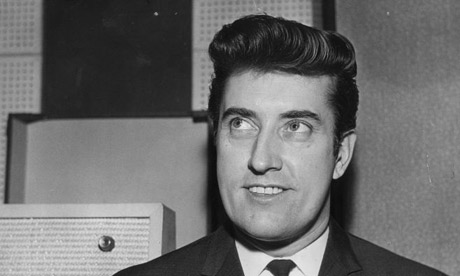
Joe Meek (1929-1967)
Suicide. Meek was obsessed with the occult and the idea of "the other side". He would set up tape machines in graveyards in a vain attempt to record voices from beyond the grave, in one instance capturing the meows of a cat he claimed was speaking in human tones, asking for help. In particular, he had an obsession with Buddy Holly (claiming the late American rocker had communicated with him in dreams) and other dead rock and roll musicians. His professional efforts were often hindered by his paranoia (Meek was convinced that Decca Records would put hidden microphones behind his wallpaper in order to steal his ideas), drug use and attacks of rage or depression. Meek's homosexuality - illegal in the UK at the time - put him under further pressure; he had been convicted of "importuning for immoral purposes" and fined £15: he was consequently subject to blackmail. In January 1967, police in Suffolk, discovered a suitcase containing the mutilated body of Bernard Oliver. According to some accounts, Meek became concerned that he would be implicated in the murder investigation when the Metropolitan Police stated that they would be interviewing all known homosexuals in the city. One month later, the eighth anniversary of Buddy Holly's death, Meek killed his landlady and then himself with a single barreled shotgun that he had confiscated from his protegé.
King Curtis (1934-1971)
Murdered. Around midnight Curtis was lugging an air-conditioning unit towards his brownstone apartment on West 86th Street in New York City when he noticed two junkies were using drugs on the steps to his home. When he asked them to leave, an argument started. The argument quickly became heated and turned into a fist-fight with one of the men, 26-year old Juan Montañez. Suddenly, Montañez pulled out a knife and stabbed Curtis in the chest. Curtis managed to wrestle the knife away and stab his assailant four times before collapsing. Montañez staggered away from the scene and Curtis was taken to a hospital, where he died from his wounds less than an hour later. Montañez was arrested at the same hospital Curtis had been taken to. When police officers investigating the murder learned that another man had been admitted to the hospital with stab wounds around the same time as Curtis, they quickly realized that the two events were connected. Montañez was charged with Curtis' murder and subsequently sentenced to a term of imprisonment.
Jeffrey Lee Pierce (The Gun Club) (1958-1996)
Brain hemorrhage. His health had been poor for some time, and he suffered further from prolonged use of opiates ("I beat scars into my arms waiting for an early death"). The final Gun Club album, 1993's Lucky Jim includes the songs "Idiot Waltz" and "Desire." In the early stages of his career, Pierce was supported by Debbie Harry of Blondie, who was convinced of his potential as musician and artist. He originally met Harry, as well as Chris Stein (also of Blondie), through his position as the president of Blondie's US fan club. Jeffrey Lee Pierce died from a brain hemorrhage.
Rhett Forrester (Riot) (1956-1994)
Murdered. He was shot and killed in Atlanta, Georgia, after he refused to give up his vehicle in an attempted carjacking. The crime has not to date, been solved.
38

Dimebag Darrell (Pantera & Damageplan) (1966-2004)
Murdered. He was shot onstage while performing with Damageplan at the Alrosa Villa in Columbus, Ohio. The gunman was Nathan Gale, who shot Abbott eight times, including five times in the head, killing him instantly. Gale then continued shooting, killing four others and wounding a further seven. Gale fired a total of fifteen shots, taking the time to reload once and remaining silent throughout the shooting. Early theories of motive suggested that Gale may have turned to violence in response to the breakup of Pantera, or the public dispute between Dimebag Darrell and Pantera singer Phil Anselmo, but these were later ruled out by investigators. Another theory was that Gale believed Dimebag Darrell had stolen a song that he had written. In the book, A Vulgar Display Of Power, several of Gale's personal writings, given to the author by his mother, suggest that the gunman was not angry about Pantera's breakup or about a belief that Pantera had "stolen songs;" instead, the documents suggest that Gale's paranoid schizophrenia caused delusions that the band could read his mind, and that they were "stealing" his thoughts and laughing at him.
Bob Hite (Canned Heat) (1943-1981)
Heart attack. Hite was found dead in his van of a heart attack.
David Byron (Uriah Heep) (1947-1985)
Alcohol related complications. He died of alcohol related complications in Reading. The coroner's report cited epilepsy and fatty liver.
Jeffrey Porcaro (Toto) (1954-1992)
Gardening accident. He was spraying insecticide in his garden and inhaled too much of the spray, triggering a heart attack. An autopsy revealed a serious heart condition that had been previously undiagnosed.
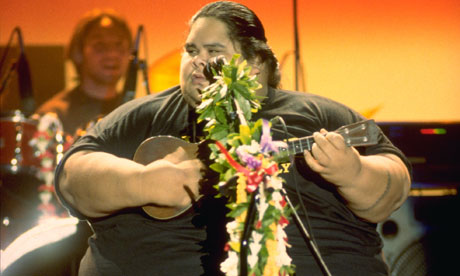
Israel Kamakawiwoʻole (1959-1997)
Weight-related respiratory illness. Kamakawiwoʻole was obese and at one point carried 757 pounds (343 kg; 54.1 st) on his 6-foot-2-inch (1.88 m) frame. He endured several hospitalizations because of problems caused by his weight and died at The Queen's Medical Center in Honolulu.
Dédé Fortin (Les Colocs) (1962-2000)
Suicide. He committed sepuku, a Japanese ritual suicide by disembowelment, (removing of some of the vital organs) in his apartment in Montreal. A friend found him in a pool of blood.
Suba (1961-1999)
He was working on the postproduction of the album of his newfound diva, Bebel Gilberto, when his studio caught fire. Overcome by smoke, he died trying to rescue the newly recorded material with her. Suba died just a few days after the release of his now-legendary album São Paulo Confessions, and shortly before the completion of Bebel Gilberto's acclaimed Tanto Tempo, the biggest selling Brazilian album outside Brazil.
Lester Butler (The Red Devils) (1959-1998)
Speedball. Butler died of an overdose of heroin and cocaine in Los Angeles. Two of his friends were convicted in his death with involuntary manslaughter.
Drug overdose. Gray had been found dead in room 431 at the Towneplace Suites hotel in Urbandale, Iowa. Autopsy results were released that stated Gray had died of an accidental overdose of morphine and fentanyl, and had also shown signs of "significant heart disease".
39
El Duce (The Mentors) (1958-1997)
Hit by a Train, while intoxicated.
Dennis Wilson (The Beach Boys) (1944-1983)
Drowned. Succeeding years saw Wilson battling alcohol abuse. Smoking and drugs had also taken a toll on his vocal chords, although the resultant gravelly effect helped define him as a singer. On December 28, 1983, Wilson drowned at Marina Del Rey, Los Angeles after drinking all day and diving in the afternoon to recover items he had thrown overboard at the marina from his yacht back in 1980.
Johnny Thunders (The New York Dolls) (1952-1991)
Conflicting sources report heroin overdose or methadone and cocaine poisoning or that the autopsy did not disclose a cause of death. He apparently died of drug-related causes, but it has been speculated that it was the result of foul play. Dee Dee Ramone took a call in New York the next day from Stevie Klasson, Johnny's rhythm guitar player. "They told me that Johnny had gotten mixed up with some bastards... who ripped him off for his methadone supply. They had given him LSD and then murdered him. He had gotten a pretty large supply of methadone in England, so he could travel and stay away from those creeps - the drug dealers, Thunders imitators, and losers like that." What is known for certain is that Johnny's room was ransacked and most of his possessions were missing (passport, makeup, clothes). Rigor mortis had set in with his body positioned in an unnatural state, described by eyewitnesses as "like a pretzel", underneath a coffee table. Friends and acquaintances acknowledge he had not been using heroin for some time, relying on his methadone prescriptions. The police did not open a criminal investigation.
Jermaine Stewart (1957-1997)
AIDS-related liver cancer. He died in the Chicago suburb of Homewood, Illinois.
Tim Hardin (1941-1980)
Heroin overdose. During the years Hardin moved between England and the U.S. his heroin addiction had taken control of his life by the time his last album, "Nine". He sold his writers' rights in the late 1970s. Tim Hardin died of a heroin overdose in 1980.
Brenda Fassie (1964-2004)
Cocaine overdose. Brenda collapsed at her home in Buccleuch and was admitted into a hospital in Johannesburg. The press were told that she had suffered cardiac arrest but later reported that she had slipped into a coma brought on by an asthma attack. The post-mortem report revealed that she had taken an overdose of cocaine in the night of her collapse, and this was the cause of her coma. She stopped breathing and suffered brain damage from lack of oxygen. Fassie was visited in the hospital by Nelson Mandela, Winnie Mandela, and Thabo Mbeki, and her condition was front-page news in South African papers. She died in hospital without returning to consciousness after her life support machines were turned off. According to the South African Sunday Times and the managers of her music company, the post-mortem report also showed that she was HIV-positive.
Billy MacKenzie (The Associates) (1957-1997)
Drug overdose. Depression and the death of his mother are believed to have contributed to his suicide. He overdosed on a combination of the anti-depressant amitriptyline, temazepam, and paracetamol in the garden shed of his father's house in Dundee.
Blaze Foley (1949-1989)
Murdered. Foley was shot to death while helping his friend Concho January defend himself from his violent son Carey January on the verandah of Concho's house. Carey January was acquitted of murder in the first degree by reason of self-defense. Friends of Foley were outraged at the verdict.
Dinah Washington (1924-1963)
Drug overdose. Dinah's eighth husband, NFL player Dick "Night Train" Lane went to sleep with his wife and awoke later to find Dinah slumped over and not responsive. The doctor came to the scene to pronounce her dead. An autopsy later showed a lethal combination of secobarbital and amobarbital which contributed to her untimely death.
Murdered. Vega was murdered while on his way to perform at a village festival concert in the Mexican state of Sinaloa. Gunmen travelling in a truck drove alongside his red Cadillac and opened fire on the vehicle. They then reportedly fired shots at Vega's head and chest from close range. At the time of his death, rumours had been circulating online that he had already been killed. Just hours before he was shot, Vega was interviewed for an article on entertainment website La Oreja, in which he confirmed he was still alive. Vega was a singer of narcocorridos — ballads that celebrate the lives of drug dealers. Musicians who play this kind of music in Mexico are known to sometimes become the targets of rival gangs.
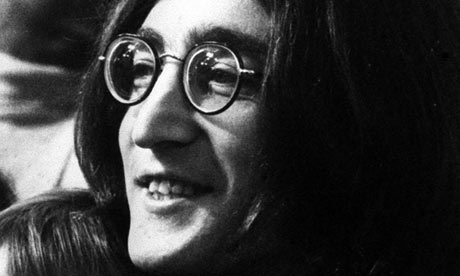
John Lennon (1940-1980)
Murdered. When Lennon and Yoko Ono returned to the Dakota, the New York apartment building where they lived, when Mark David Chapman shot Lennon in the back four times at the entrance to the building. Earlier that evening, Lennon had autographed a copy of Double Fantasy for Chapman. Lennon was taken to the emergency room of the nearby hospital and was pronounced dead on arrival.
Glenn Miller (1904-1944)
Disapeared. On December 15, 1944, Miller was to fly from the United Kingdom to Paris, France, to play for the soldiers there. His plane departed from Bedfordshire and disappeared while flying over the English Channel. No trace of the aircrew, passengers or plane has ever been found. Miller's status is missing in action. There are a few theories about what happened to Miller's plane, including the suggestion that he might have been hit by Royal Air Force bombs after an abortive raid on Germany. One hundred and thirty-eight Lancaster bombers, short on fuel, jettisoned approximately 100,000 incendiaries in a designated area before landing. The logbooks a Royal Air Force navigator recorded that he saw a small, single-engined monoplane spiraling out of control and crashing into the water. However, a second source, while acknowledging the possibility, cites other RAF crew members flying the same mission who stated that the drop area was in the North Sea. In a book by a former member of Dwight D. Eisenhower's personal staff, argues that the U.S. government covered up Miller's death. This suggested that Miller, who spoke German, had been enlisted by Eisenhower to covertly attempt to convince some German officers to end the war early. The book goes on to suggest that Miller was captured and killed in a Paris brothel, and his death covered up to save the government embarrassment.
Falco (1957-1998)
Car crash. He died of severe injuries received from a collision with a bus in his Mitsubishi Montero in the Dominican Republic. It was initially reported that the autopsy showed high blood levels of alcohol and cocaine, however this was later dismissed. At the time of his death, he was planning a comeback.
Adrian Borland (The Sound) (1957-1999)
Borland had lived with severe depression for about 14 years and he had tried to commit suicide at least three times, the third (according to his mother) when he jumped in front of a car. He had also developed a drinking problem. At Christmas horrified commuters watched as Borland committed suicide by throwing himself under a train at Wimbledon Station.
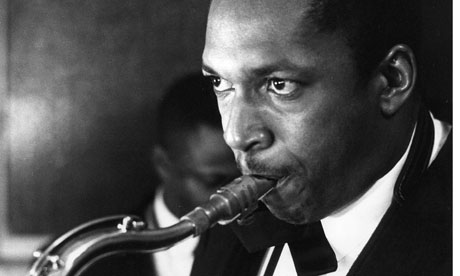
John Coltrane (1926-1967)
Liver cancer. The cause of his illness was hepatitis, although he also attributed the disease to Coltrane's heroin use. In an interview Albert Ayler claimed that Coltrane was consulting a Hindu meditative healer for his illness instead of Western medicine, though Alice Coltrane later denied this.
He was diagnosed with an unexpectedly serious and extremely rare type of cancer - heart cancer.
Kirsty MacColl (1959-2000)
killed in a controversial boating incident. On a holiday in Mexico, with her sons and her partner, she and her sons went diving in a specific diving area that watercraft were restricted from entering. With the group was a local veteran divemaster. As the group was surfacing from a dive, a speeding powerboat entered the restricted area. MacColl saw the boat coming before her sons did; Louis was not in the boat's path, but Jamie was. She was able to push him out of the way (he sustained minor head and rib injuries) but in doing so, she was hit by the boat and killed instantly.
Eddie Hazel (Parliament & Funkadelic) (1950-1992)
Philip Taylor Kramer (Iron Butterfly) (1953-1995)
Presumed suicide. He disappeared without a trace in 1995. Four years later hikers in LA found his remains in a car at the bottom of a 200 foot ravine. Kramer was also working on guidance systems for the MX missile for the US government. Prior to his discovery, many theories abounded regarding his sudden and unexplained disappearance.

Elvis Presley (1935-1977)
Cardiac arrhythmia. In 1977 he was hugely overweight, his mind dulled by the pharmacopoeia he daily ingested, he was barely able to pull himself through his abbreviated concerts. In Louisiana, the singer was on stage for less than an hour and was impossible to understand. He failed to appear in Baton Rouge: he was unable to get out of his hotel bed, and the rest of the tour was cancelled. Despite the accelerating deterioration of his health, he stuck to most touring commitments. In South Dakota, he was so nervous on stage that he could hardly talk, and unable to perform any significant movement. The fans were becoming increasingly voluble about their disappointment, but it all seemed to go right past. His world was now confined almost entirely to his room and his spiritualism books. A cousin, recalled how Presley would sit in his room and chat for hours, sometimes recounting favorite Monty Python sketches and his own past escapades, but more often gripped by paranoid obsessions. When he was scheduled to fly out of Memphis, to begin another tour, ih that afternoon he was discovered unresponsive on his bathroom floor. Attempts to revive him failed, and death was officially pronounced . Autopsy founds in his system "significant" levels of ethinamate, methaqualone, codeine and different barbiturates, including amobarbital, pentobarbital, and phenobarbital.
Ofra Haza (1957-2000)
Ofra Haza died of AIDS-related pneumonia. While the fact of her HIV infection is now generally acknowledged, the decision by the major Israeli newspaper Ha'aretz to report about it shortly after her death caused controversy in Israel. That a star with a reputation for clean living could be stricken caused shock among fans, debate about the media's potential invasion of her privacy, and speculation about how she had become infected, particularly blaming her husband. Other reports indicate that she may have contracted the virus as a result of a blood transfusion in a Turkish hospital following a miscarriage.
Peter Tosh (1944-1987)
Murdered. Just after Tosh had returned to his home in Jamaica, a three-man gang came to his house demanding money. Tosh replied that he did not have any with him but the gang did not believe him. They stayed at his residence for several hours in an attempt to extort money from Tosh. During this time, many of Tosh's friends came to his house to greet him following his return to Jamaica. As people began to arrive, the gunmen became more and more frustrated, especially the leader of the gang, Dennis 'Leppo' Lobban, a man whom Tosh had befriended and tried to help find work after a long jail sentence. Tosh said he had no money in the house, after which the gang's leader put a gun to Tosh's head and fired twice, killing him.
Jeff Healey (The Jeff Healey Band) (1966-2008)
Cancer. Healey underwent surgery to remove metastatic tissue from both lungs. In the previous eighteen months, he had two sarcomas removed from his legs.
Healey died of cancer.

John Balance (Coil) (1962-2004)
He died after falling from a second floor landing in his home. Peter Christophersonannounced Balance's death on the Threshold House website and provided details surrounding the tragedy.
Robbin Crosby (Ratt) (1959-2002)
Reported causes of his death include heroin overdose and AIDS-related complications, which he admitted to contracting from shooting drugs.
Richard Manuel (The Band) (1943-1986)
Suicide. He was in hotel with other Band-mates. Manuel talked with Levon Helm about music, film, etc., in Helm's room. According to Helm, at around 2:30 Manuel said he needed to get something from his room. Upon returning to his motel room, it is believed that he finished one last bottle of Grand Marnier before hanging himself. Manuel's wife Arlie—also intoxicated at the time—discovered his body along with the depleted bottle and a small amount of cocaine the following morning.
Bernard Edwards (Chic) (1952-1996)
Edwards teamed up with Nile Rodgers again for the Chic reunion in the early 1990s. In 1996 Nile Rodgers was named JT Superproducer of the Year in Japan, and was invited to perform there with Chic. Just before the concert in Tokyo, Edwards fell ill, but despite Rodgers' insistence, he refused to cancel the gig. He managed to perform but had to be helped at times. After the concert he retired to his hotel room where he was later found dead by Rodgers. The cause of death was ruled to be pneumonia.
Paul Butterfield (The Paul Butterfield Blues Band) (1942-1987)
Died from heart failure due to an overdose of unspecified drugs.
Lucky Dube (1964-2007)
Murdered. He was killed in a Johannesburg suburb shortly after dropping two of his seven children off at their uncle's house. Dube was driving his Chrysler 300C which the assailants were apparently after. Police reports suggest he was shot dead by carjackers. Five men have been arrested in connection with the murder.
Dan Hartman (1950-1994)
Brain tumor resluting from AIDS.
44

Billie Holiday (1915-1959)
Results of heroin- and alcoholaddiction. Holiday was taken to a hospital in New York suffering from liver and heart disease. Police officers were stationed at the door to her room. She was arrested for drug possession as she lay dying, and her hospital room was raided by authorities. Holiday remained under police guard at the hospital until she died from cirrhosis of the liver. In the final years of her life, she had been progressively swindled out of her earnings, and she died with $0.70 in the bank and $750 (a tabloid fee) on her person.
Vincent Crane (The Crazy World Of Arthur Brown) (1943-1989)
Suicide. Crane died of an overdose of painkillers after a lifetime of struggling with manic depression.
Steve Marriott (The Small Faces) & (Humble Pie) (1947-1991)
Burned in a fire. Marriott and his wife were on a flight home from the USA, where he had been recording songs. During the flight, according to his wife, Marriott was drinking heavily and was in a foul mood, and they constantly argued. On arrival in the UK they were met by a mutual friend and ate at one of Marriott's favourite restaurants, where he consumed more alcohol. They returned to their friend's house and decided to stay overnight, since it was now the early hours of the next morning, but upstairs in bed, Marriott and his wife continued to argue. She finally fell asleep and was unaware that Marriott had called a taxi and made his way home alone. The following morning a passing motorist saw the roof of Marriott's cottage ablaze and called the fire brigade. It was reported that four fire engines were needed to put out the fire. It is believed that the most likely cause of the fire was that soon after arriving home, jet-lagged and tired, in the early hours, Marriott had lit a cigarette whilst in bed and almost immediately fallen into a deep sleep. Since Marriott was found lying on the floor between the bed and wall, investigators concluded he may have tried unsuccessfully to escape after being awakened by the blaze. Disoriented and confused after inhaling large amounts of thick smoke, Marriott had turned left instead of right towards the bedroom door and safety. He had been unable to rectify his mistake before being overcome with smoke. At the inquest, a verdict of accidental death by smoke inhalation was recorded. Marriott's blood was also found to contain quantities of valium (taken earlier for flight nerves), alcohol and cocaine.
Teena Marie (1956-2010)
Marie was found unresponsive by daughter Alia Rose at her home in Pasadena, California. Marie had suffered a grand mal seizure just one month before her death. An autopsy was performed by the Los Angeles County coroner, who found no signs of apparent trauma or discernible cause of death. The coroner will perform toxicity tests to pinpoint the cause of death.
45

Marvin Gaye (1939-1984)
Murdered. After a tour, he isolated himself by moving into his parents' house. He threatened to commit suicide several times after bitter arguments with his father. Gaye's father fatally shot him after an argument that started after his parents squabbled over misplaced business documents. Gaye attempted to intervene, and was killed by his father using a gun that Marvin Jr. had given him four months before. Marvin Sr. was sentenced to five years of probation after pleading guilty to voluntary manslaughter. Charges of first-degree murder were dropped after it was revealed that Marvin Sr. had been beaten by Gaye before the killing. Doctors discovered Marvin Sr. had a brain tumor but was deemed fit for trial.
Ricky Nelson (1940-1985)
Plane crash. In-flight fire due to faulty combustion heater. Nelson dreaded airplane flying but refused to travel by bus. He decided he needed a private plane and purchased a luxurious plane for private use that once belonged to the DuPont family and later to Jerry Lee Lewis. The plane was plagued with annoying mechanical mishaps. In one incident, the band was forced to push the plane off the runaway after an engine blew, and in another incident, a malfunctioning sparkplug prevented Nelson from participating in the first Farm Aid concert. But Nelson's private copilot Ken Ferguson stated there were no areas of "major safety concern" with the plane
Fred "Sonic" Smith (MC5) (1949-1994)
Heart attack. He was Patti Smith's husband.
Freddie Mercury (Queen) (1946-1991)
Bronchial pneumonia resulting from AIDS. Mercury was an acknowledged bisexual. While some critics claimed he hid his sexual orientation from the public, others claimed he was "openly gay". According to his partner, Mercury was already diagnosed with AIDS in 1987. Mercury denied the rumours for the press by saying he was tested HIV negative. In 1991 Mercury held a public statement by confirming he had AIDS. Only one day later he died of the disease.
Chris Whitley (1960-2005)
Lungcancer. He cancelled his tour due to health issues. Dan Whitley, his brother, revealed that he was "in a comfortable warm home with hospice care at his disposal". Later that week it was revealed that Whitley was terminally ill with lung cancer.
West Montgommery (1923-1968)
Heart attack. Despite he had no interest in the vices that often attend the jazz world, Wes died a heart attack at young age.
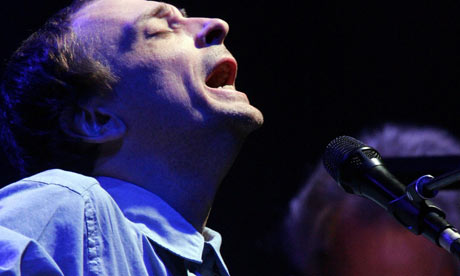
Vic Chesnutt (1964-2009)
Suicide. Chesnutt died from an overdose of muscle relaxants that had left him in a coma in an Athens hospital. In a 2009 interview, while discussing the song "Flirted with You All My Life", he said, "You know, I've attempted suicide three or four times. It didn't take."
46

Nat King Cole (1919-1965)
Lung cancar. Cole was a heavy smoker of Kool menthol cigarettes, believing that smoking up to three packs a day gave his voice the rich sound it had (Cole would smoke several cigarettes in rapid succession before a recording for this very purpose). The many years of smoking caught up with him, resulting in his death from lung cancer.
Phyllis Hyman (1949-1995)
Suicide. Hyman committed suicide by overdosing on pentobarbital and secobarbital in her New York City apartment. She was found hours before she was scheduled to perform at the Apollo Theatre. Her suicide note read in part: "I'm tired. I'm tired. Those of you that I love know who you are. May God bless you."
Héctor Lavoe (1946-1993)
Complications caused by AIDS. Lavoe's life was plagued by tragic events, emotional turmoil, and pain. Both his mother-in-law and father died, and his seventeen year old son Héctor, Jr. was accidentally shot by a friend. Also, Lavoe was diagnosed with HIV, the virus that can progress to AIDS. These events would push him to the limit. In 1988, Héctor attempted to commit suicide by jumping off the ninth floor of a hotel in Puerto Rico. He survived the attempt, but from that day forward, he would never completely recover as AIDS began to ravage his body due to the use of intravenous drugs and shared needles. Héctor died in 1993, at a hospital in New York City. The cause of death was diagnosed as “a complication caused by AIDS".
Paul Hester (Crowded House) (1959-2005)
Suicide. Hester committed suicide by hanging himself from a tree in a public park near his home. He had split from the mother of his two daughters. It was known to family and close friends that he had been suffering from depression for a number of years, and he was known for his extreme mood swings.

Mark Sandman (Morphine) (1952-1999)
Heart attack. Sandman collapsed on stage in Italy while performing with Morphine. He was soon pronounced dead of a sudden heart attack.
John Panozzo (Styx) (1948-1996)
Alcohol-related illness. Years of partying with Styx and excessive drinking began to take a toll on his liver. In the mid-1990s, as Styx was about to embark on its first tour with the classic line-up since 1983, John fell seriously ill and began battling cirrhosis of the liver, eventually dying of gastrointestinal hemorrhaging.
Alex Harvey (Sensational Alex Harvey Band) (1935-1982)
Heart attack. While waiting to take a ferry back to shore after performing his last concert with his new band, the Electric Cowboys, Harvey suffered a massive heart attack. In an ambulance on the way to the hospital, he suffered a second heart attack, this one fatal.
Paul Raven (Killing Joke)/(Ministry)(1961-2007)
Raven died of an apparent heart attack in his sleep, while recording in Geneva, Switzerland.

Mark Linkous (Sparklehorse) (1962-2010)
Suicide. Linkous committed suicide by shooting himself in the heart outside a friend's house in Knoxville. According to a spokesperson for the Police Department, the musician was staying with two friends, who told authorities that he had been drinking heavily and had become upset after trading text messages with an unknown person. The friends said Linkous went upstairs for a short period, then told the two that he was going for a walk and exited through a back door. A witness saw him sit down in the alley near Irwin Street, pull out his rifle, and fire into his own chest. Linkous was declared dead at the scene; police did not find a suicide note, but told the press that he was having "personal problems."
47
Judy Garland (1922-1969)
An incautious self-overdosage of barbiturates. Garland was found dead by her husband, Mickey Deans, in the bathroom of their rented Chelsea, London house. The coroner, stated at the inquest that the cause of death was "an incautious self-overdosage" of barbiturates; her blood contained the equivalent of ten 1.5-grain (97 mg) Seconal capsules. He also stressed that the overdose had been unintentional and that there was no evidence to suggest she had committed suicide. Garland's autopsy showed that there was no inflammation of her stomach lining and no drug residue in her stomach, which indicated that the drug had been ingested over a long period of time, rather than in one dose. Her death certificate stated that her death had been "accidental."

Édith Piaf (1915-1963)
She died of liver cancer at Plascassier, on the French Riviera. She had been drifting in and out of consciousness for several months. It is said that Sarapo drove her body back to Paris secretly so that fans would think she had died in her hometown. She is buried in Père Lachaise Cemetery in Paris next to her daughter, where her grave is among the most visited. Although she was denied a funeral mass by the Roman Catholic archbishop of Paris because of her lifestyle, her funeral procession drew tens of thousands of mourners onto the streets of Paris and the ceremony at the cemetery was attended by more than 100,000 fans. Charles Aznavour recalled that Piaf's funeral procession was the only time since the end of World War II that he saw Parisian traffic come to a complete stop.
Laura Branigan (1957-2004)
Brain aneurysm. Branigan died at her home on Long Island, New York. Her death was attributed to a previously undiagnosed brain aneurysm. It was reported in the media that she had been experiencing headaches for several weeks before her death but did not seek medical attention.
Ian Stewart (1938-1985)
Also known as "the sixth Rolling Stone", in 1963, the band's manager said Stewart should no longer be onstage, that six members were too many for a popular group and that the burly, square-jawed Stewart didn't fit the image. He said Stewart could stay as road manager and play piano on recordings. Stewart accepted this demotion. In 1985, Stewart began having respiratory problems as he went to a clinic to have the problem examined; he suffered a heart attack and died in the waiting room.
48
Guru (1961-2010)
Heart attack as a result from cancer. On February 28, 2010, Guru went into cardiac arrest and, following surgery, fell into a coma. It was claimed that Guru had briefly awakened from his coma but died on April 19, 2010, from cancer
Peter Steele (Type O Negative) (1962-2010)
Heart attack. Peter Steele died of heart failure. Prior to his death, Steele had been enjoying a long period of sobriety and improved health and was imminently due to begin writing and recording new music.
She died from cancer in Los Angeles. Her death that morning was initially announced on John Lydon's homepage, who was her stepfather.
Found shot and critically wounded outside his recording studio. According to doctors, he had been shot several times in the torso and was in critical condition; he died during surgery at the local hospital. Roger's brother Larry was discovered dead in a car a few blocks away with a single gunshot wound to the head. A pistol was found inside the vehicle, which matched the description of a car leaving the scene of Roger's shooting. Police concluded it to be an apparent murder-suicide, but family members could not offer any reason or motive. It is likely that a personal dispute had developed between the two brothers; as far as can be determined, Larry shot Roger, then shot himself.
Wendy O. Williams (Plasmatics) (1949-1998)
Suicide. Williams had first attempted suicide in 1993 by hammering a knife into her chest; the knife lodged in her sternum and she changed her mind, calling a friend to take her to hospital. She attempted suicide again in 1997 with an overdose of ephedrine. Finally Williams died, of a self-inflicted gunshot wound in a wooded area near her home.
Roy Buchanan (1939-1988)
Suicide. According to his agent and others, Buchanan was doing well, having gained control of his drinking habit and playing again, when he was arrested for public intoxication after a domestic dispute, and was found hanged from his own shirt in a jail cell on 14 August 1988 in the Fairfax County, Virginia Jail. According to Jerry Hentman, who was in a cell nearby Buchanan's, the Deputy Sheriff opened the door early in the morning and found Buchanan with the shirt around his neck. His cause of death was officially recorded as suicide, a finding disputed by Buchanan's friends and family. One of his friends, Marc Fisher, reported seeing Roy's body with bruises on the head.
Tom Fogerty (Creedence Clearwater Revival) (1941-1990)
AIDS. Tom Fogerty died in Arizona of AIDS (specifically from a tuberculosis infection), having contracted HIV from blood transfusions for back ailments.
49
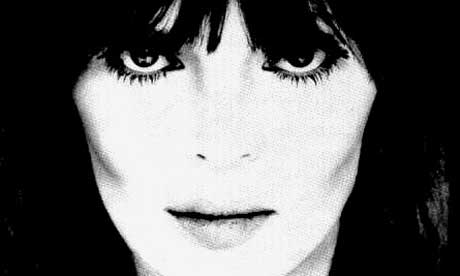
Nico (1938-1988)
Heart attack. Nico was a heroin-addict. While on holiday with her son in Ibiza, Spain, Nico had a minor heart attack while riding a bicycle and hit her head as she fell. A passing taxi driver found her unconscious and had difficulty getting her admitted to local hospitals. She was incorrectly diagnosed as suffering from heat-exposure and died at eight o'clock that evening. X-rays later revealed a severe cerebral hemorrhage as the cause of death.
Jackie Wilson (1935-1984)
Heart attack on stage in 1975 results in a coma. Died after 8 years in coma.
Joey Ramone (The Ramones) (1951-2001)
Lymphoma. Joey Ramone died of lymphoma at a New York hospital, after a seven year battle. He was reportedly listening to the song "In a Little While" by U2 when he died. This was during U2's Elevation Tour, and from that point on during shows Bono would introduce the song as a tune that was originally about a lovestruck hangover but that Joey turned it into a gospel song
Jacques Brel (1929-1978)
In 1973 he embarked in a yacht, planning to sail around the world. When he reached the Canary Islands, Brel was diagnosed with lung cancer. He returned to Paris for treatment and later continued his ocean voyage. He was also a keen pilot and owned several small planes, including the eponymous 'Jojo'. In 1975 he reached the Marquesas Islands, and decided to stay, remaining there until 1977 when he returned to Paris and recorded his well-received final album. He died in 1978.
Laura Nyro (1947-1997)
Ovarian cancer. Nyro died the same disease had claimed the life of her mother at the same age.
Lester Young (1909-1959)
Alcohol-related illness. Lester Young made his final studio recordings and live performances in Paris with drummer Kenny Clarke at the tail end of an abbreviated European tour during which he ate next to nothing and virtually drank himself to death
50
Rowland S. Howard (The Birthday Party) (1959-2009)
Howard died from liver cancer.
David Ruffin (The Temptations) (1941-1991)
Accidental overdose of cocaine. Ruffin collapsed in a Philadelphia, Pennsylvania crack house after sharing ten vials with a friend in under half an hour. Ruffin's family and friends suspected foul play, claiming that a money belt containing the proceeds from a tour ($40,000) was missing from his body.
Joe Strummer (The Clash) (1952-2002)
Heart attack. Strummer died suddenly in his home in Somerset, the victim of an misdiagnosis congenital heart defect.
Cozy Powell (1947-1998)
He died following a car crash while driving his Saab 9000 at 104 mph (167 km/h) in bad weather on the M4 motorway near Bristol. According to the BBC report, at the time of the crash, Powell's blood-alcohol reading was over the legal limit, he was not wearing a seat belt, and he was talking to his girlfriend on his mobile phone. He was living in Berkshire at the time and had returned to the studio shortly before his death to record with Fleetwood Mac co-founder Peter Green. By that time, he had been the drummer on at least 66 albums with minor contributions on many other recordings. Many rock drummers have cited him as a major influence.
Dee Dee Ramone (The Ramones) (1951-2002)
Heroin overdose.Dee Dee Ramone was found dead by his wife Barbara at his Hollywood apartment. An autopsy established heroin overdose as the official cause of death.
Michael Jackson (1958-2009)
Personal physician administered lethal dose of propofol along with two sedatives. Jackson was passed out in his bed at his rented mansion in Los Angeles. Attempts at resuscitating him by Conrad Murray, his personal physician, were unsuccessful. Los Angeles Fire Department paramedics received a 911 call, arriving three minutes later at Jackson's location. He was reportedly not breathing and CPR was performed. Resuscitation efforts continued en route to the medical center, and for an hour after arriving there he was pronounced dead.
51
Tommy Dorsey (1905-1956)
Choked to death. Dorsey had eaten a heavy meal and began choking in his sleep. Dorsey customarily began taking sleeping pills regularly at this time, therefore he was so sedated that he was unable to awaken and died from choking.
Brian Connolly (Sweet) (1947-1997)
Alcohol related illness. Connolly had another heart attack and he was hospitalised. After a week in hospital, he discharged himself, but had to be readmitted the following week. This time there was little more that could be done. He died from renal failure, liver failure and repeated heart attacks, attributed to his previous chronic alcoholism.
52
Roy Orbison (1936-1988)
Heart attack. Exhausted from a show in Europe, he returned to his home in Hendersonville to rest for a few days before flying again to London to film two more videos for the Traveling Wilburys. He spent the day flying model airplanes with his sons. After having dinner at his mother's home in Tennessee, Orbison died of a heart attack.
Harry Nilsson (1941-1994)
Heart failure. Nilsson suffered a massive heart attack in 1993. After surviving that, he began pressing his old label, RCA, to release a boxed-set retrospective of his career, and resumed recording, attempting to complete one final album. In January 1994, Nilsson died of heart failure in his Agoura Hills, California home. During Nilsson's funeral, aftershocks from the 1994 Los Angeles earthquake were felt.

Townes Van Zandt (1944-1997)
"Natural" cardiac arrhythmia. In December 1996, Van Zandt fell down the concrete stairs outside his home, badly injuring his hip. After lying outside for an hour, he dragged himself inside and called his ex-wife Jeanene, who sent their friends Royann and Jim Calvin to check on him. He told the couple that he had sustained the injury while getting out of bed, and refused medical treatment. They took him back to their home, and he spent the Christmas week on their couch, unable to get up even to use the bathroom. Determined to finish an album that he had scheduled to record, Van Zandt showed up to the Memphis studio being pushed in a wheelchair by his road manager. The manager canceled the sessions due to the songwriter's erratic behavior and drunkenness. Van Zandt finally agreed to hospitalization, but not before returning to Nashville. By the time he had consented to receive medical care, eight days passed since the injury. On December 31, X-rays revealed that Van Zandt had an impacted left femoral neck fracture in his hip, and several corrective surgeries were performed. Jeanene informed the surgeon that one of Townes' previous rehab doctors had told her detoxing could kill him. The medical staff tried to explain to her that detoxing a "late-term alcoholic" at home would be ill advised, but he would have a better chance at recovering under hospital supervision. She did not heed these warnings, and instead checked Townes out of the hospital against medical advice. Understanding that he would most likely drink immediately after leaving the hospital, the physicians refused to prescribe him any painkillers.By the time Van Zandt was checked out of the hospital early the next morning, he had begun to show signs of DTs. Jeanene rushed him to her car, where she gave him a flask of vodka to ward off the withdrawal delirium. She would later report that after getting back to his home in Smyrna, Tennessee and giving him alcohol, he was "lucid, in a real good mood, calling his friends on the phone." Jim Calvin shared a marijuana joint with him, and he was also given about four Tylenol PM tablets. While Jeanene was on the phone with Susanna Clark, their son Will noticed that Townes had stopped breathing and "looked dead." He alerted his mother, who attempted to perform CPR, "screaming his name between breaths." Townes Van Zandt died in the early morning hours of January 1, 1997. His official cause of death was "natural" cardiac arrhythmia. He died 44 years to the day after Hank Williams, one of his main songwriting influences.
Kevin DuBrow (Quiet Riot) (1955-2007)
Accidental overdose of cocaine. DuBrow had been found dead in his house in Las Vegas. The cause of death was determined to be an accidental overdose of cocaine. He had died about six days before his discovery.
In 2010, Mick Karn announced on his website that he had been diagnosed with advanced-stage cancer; the specific type of ailment was not mentioned. According to David Torn, Karn's cancer had apparently already spread and he was undergoing chemotherapy. The website announcement stated that Karn had been struggling financially for some time, and appealed for donations to help pay for his medical care and provide financial assistance for his family. In addition, several people Karn has worked with, in particular Midge Ure, Porcupine Tree, and Masami Tsuchiya, have announced concerts in support of the appeal. According to a website update dated September 2010, the funds raised by the appeal enabled Karn and family to move back to London where Karn received treatment. But the cancer spread beyond the possibility of treatment, and Karn died at home on 4 January 2011.
53

Jerry Garcia (The Grateful Dead) (1942-1995)
Heart attack. By the beginning of 1995, Garcia's physical and mental condition began a decline. His playing ability suffered to the point where he would turn down the volume of his guitar, and he often had to be reminded of what song he was performing. In light of his drug relapse in 1989 and current condition, Garcia checked himself into the Betty Ford Center during. His stay was limited, however, lasting only two weeks. Motivated by the experience, he then checked into the Serenity Knolls treatment center in Forest Knolls, California. But a few weeks later Garcia's body was discovered in his room at the rehabilitation clinic. The cause of death was a heart attack. Garcia had long struggled with drug addiction, weight problems, and sleep apnea, all of which contributed to his physical decline.
Maria Callas (1923-1977)
Myocardial infarction. Callas spent her last years living largely in isolation in Paris and died of a myocardial infarction.
Don Myrick (Earth, Wind & Fire) (1940-1993)
Murdered. He was fatally shot in Los Angeles, by a policeman during a narcotics investigation. While attempting to serve a search warrant, the policeman mistook a butane lighter in Myrick's hand for a weapon. He fired a single bullet that hit Myrick in the chest. Myrick died in hospital shortly afterwards.
Sterling Morrison (The Velvet Underground) (1942-1995)
Compications of non-Hodgkin's lymphoma.

Frank Zappa (1940-1993)
Prostate cancer. Frank Zappa died in his home surrounded by his wife and children. At a private ceremony the following day, Zappa was interred in an unmarked grave at the Westwood Village Memorial Park Cemetery in Westwood, Los Angeles. Two days later his family publicly announced that "Composer Frank Zappa left for his final to
















































































































































































missing rory gallagher
ReplyDeleteYes thank you for the response, I'm sorry due to negligence and forgotten, he should be included, died at the age of 47 years, Rory Gallagher (2 March 1948 – 14 June 1995) was an Irish blues-rock multi-instrumentalist, songwriter, and bandleader. Born in Ballyshannon, County Donegal, and raised in Cork, Gallagher recorded solo albums throughout the 1970s and 1980s, after forming the band Taste during the late 1960s. A talented guitarist known for his charismatic performances and dedication to his craft, Gallagher's albums have sold in excess of 30 million copies worldwide. Gallagher received a liver transplant in 1995, but died of complications later that year in London, UK.
ReplyDeleteGreat Channel! A lot of fine work here in memory. Please note your photo of Glen Miller is actually Jimmy Stewart, who did resemble Miller, and played him in the film about his life. Regards Ken, Canada
ReplyDeleteBon Scott, Jani Lane, Steve Lee, Scott Smith...
ReplyDeleteHey! I have read all your Blog this So Nice and Awesome service you have provided, I learn many new things from here and want implement my website. If you are also Know for Kitchens Thirsk related to this then visit my website.
ReplyDeletePlease Update and Add: Ronnie Lane, Ian McLagan, Charlie Watts, Nicky Hopkins, Mick Ronson, Vince Taylor (original ziggy inspiration) - sorry I guess that I could go on. John McN. Mentor, Ohio
ReplyDeleteLove you Dominic, Happy 38th baby
ReplyDelete